BUSINESS QUARTERLY













Introducing a new concept in family living. One where everyday family life is made extraordinary. Imagine Sunday morning pancakes cooked on a state-of-the-art Gaggeneau stove and enjoyed with a view of a parkland paradise. Imagine dinner parties downstairs in the sprawling entertainment area while the kids have pillow fights in one of the four bedrooms upstairs. Imagine a pristine 300m lagoon as your swimming pool. One where your kids can paddleboard and kayak and more importantly, one you never have to clean.
City Centre’s Luxury Family Residences, now available from R2.6 million.
steyncity.co.za








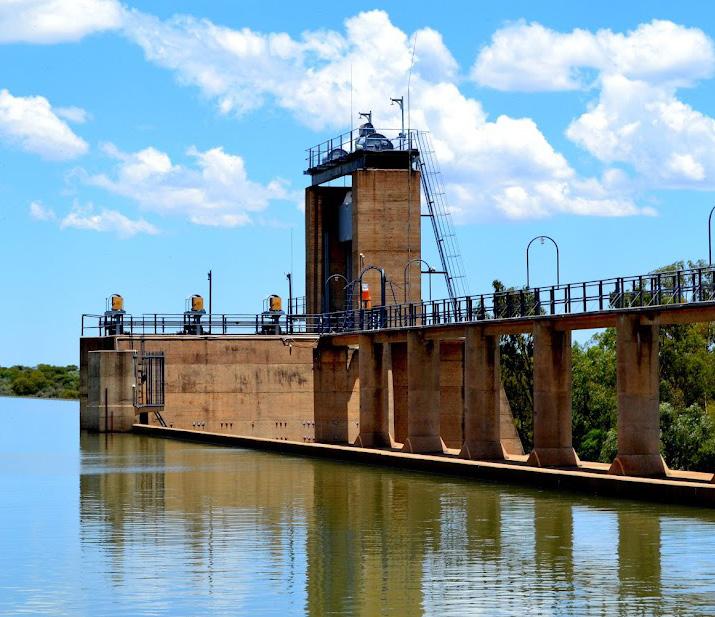
Frances Baard District of the Northern Cape

The Frances Baard District Municipality is predominantly a mining and agricultural district, with a lot of potential yet unlocked. Although it is the smallest district in the Northern Cape, it has the strongest economic region in the province—accounting for 36% of the provincial gross domestic product.
The district comprises four local municipalities: Dikgatlong, Phokwane, Sol Plaatje and Magareng.

Warrenton, the administrative centre of Magareng Local Municipality, is situated approximately 75 kilometres north of the capital Kimberley, on the banks of the Vaal River. The local municipality is referred to as Magareng due to its convergence of two important transport routes that lead to the
two busiest business hubs in the country, namely the N12 national road as well as the N18 route from the North West which also passes through Warrenton.
The railway line that connects Gauteng with the Northern and Western Cape Province runs through Magareng Municipality, with a railway station at Warrenton and Windsorton. The railway line also connects the Northern Cape and North West Province.
The municipal area comprises an urban node, villages and farms. The urban node consists of Warrenton, Warrenvale and Ikhutseng, while small agricultural villages have been established throughout the municipal area—of which Bullhill, Fourteen Streams, Sydney’s Hope, Windsorton Station, Moleko’s Farm, Nazareth and Hartsvallei Farms are the most prominent. The rest of the area comprises mainly mixed farming.
• Old Doornhof Hostel (ERF no. 421) — Call centre and satellite college — R60 million

• Old Cheese Factory (ERF no. 311) — Grain silo facility — R130 million
• Old Kopano Bakery (portion of ERF no. 585) — Bakery — R10 million

—here’s what it is doing to better the country, under the leadership of Velaphi Ratshefola

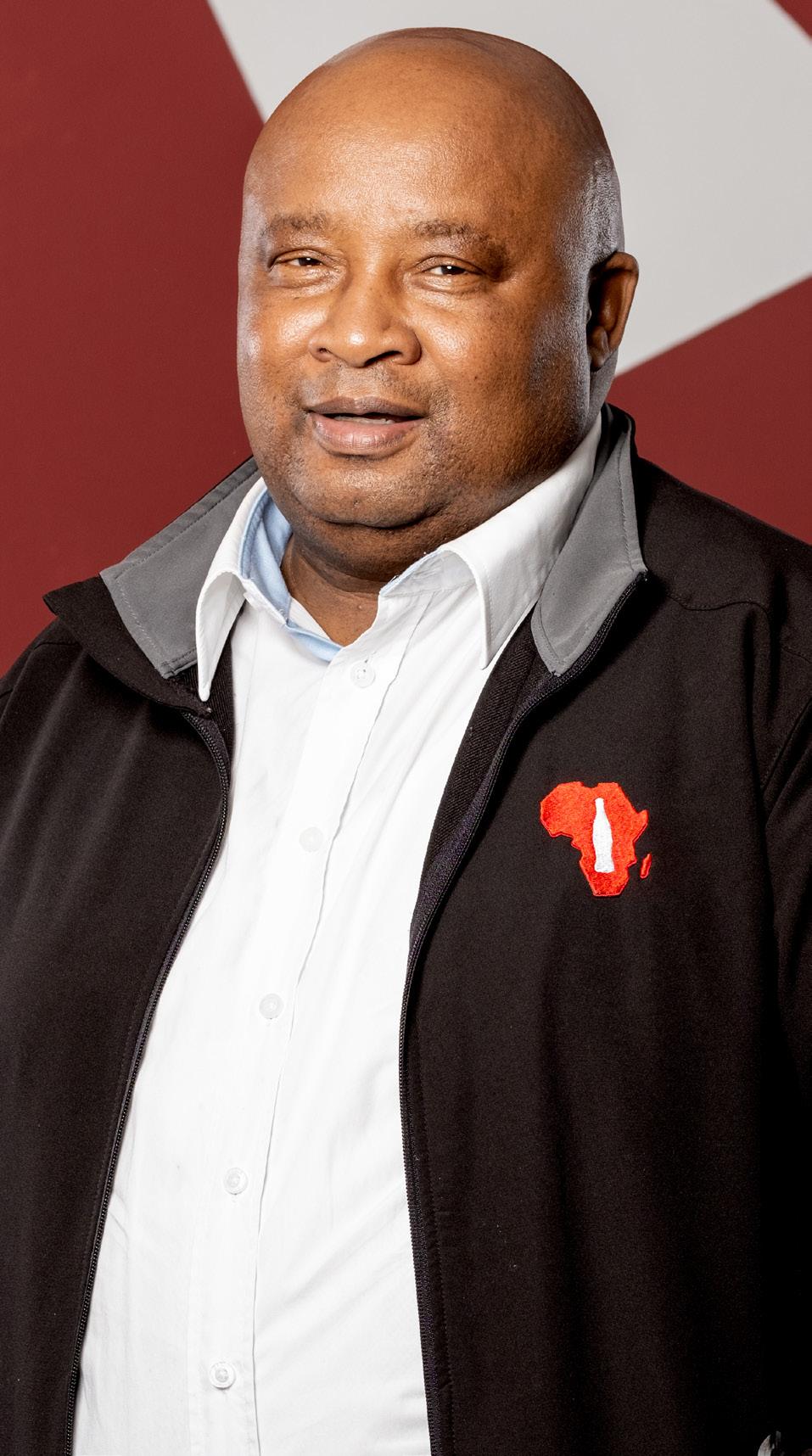

Century City Letting offers various luxury apartments across Century City—such as the Residences, Island Club, Manhattan Suites and Conferencing, as well as Bridgewater with its glorious views. Our mission is to deliver a relaxed and refined long-term rental experience. We stand out from the rest with our standards of integrity, expertise and sophistication.
You will feel like you are inside a lush, luxury travel magazine as you explore our individual apartments. At the Residences and Century City Letting, we exude energy, luxury and leisure.
The Residences at Crystal Towers offers you luxurious, self-catering apartments with 24-hour on-site security, situated directly across the Canal Walk shopping mall.




All the rooms offer views of Century City and are elegantly furnished with flat-screen TVs and free Wi-Fi. The kitchens are fully equipped with refrigerators, microwaves, dishwashers, ovens, stoves etc. The stylish bathrooms have underfloor heating plus heated towel rails.

Within this safe environment there are many restaurants, bars, convenience stores, corporate offices and conference centres.
There are a number of adventurous activities that can be done around Century City, including birdwatching at Intaka Island, ambling through Ratanga Park, enjoying a boat cruise along the canal, and so much more.
Century City is a great choice for travellers interested in shopping, tourist attractions and sightseeing.
Business travellers particularly like the location. They have rated it 9.0 for a work-related trip.
Free parking is available on-site and an airport shuttle can be requested at a nominal charge to Cape Town International Airport, located 20 kilometres away.
We speak your language and provide you with the luxury staycation you deserve!

 BY
BY



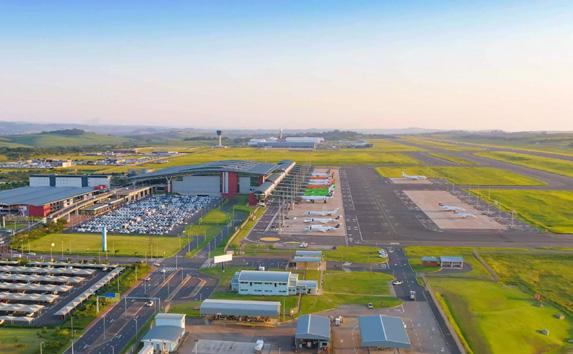
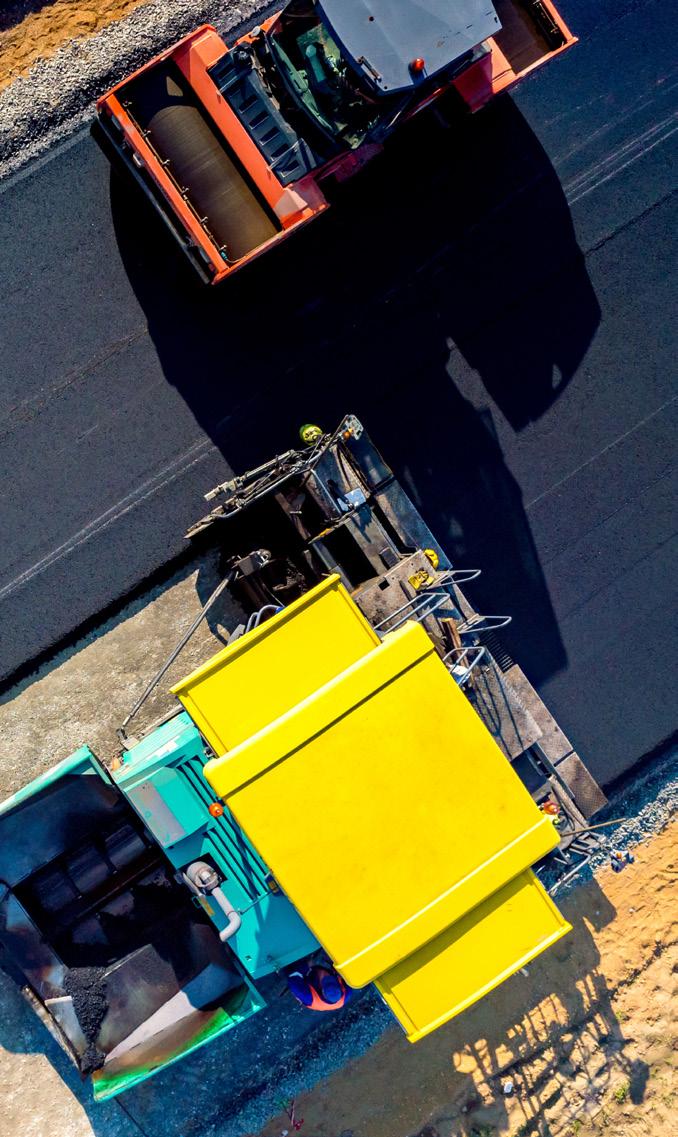
Sekta is an industrial services force that reflects the maturity of our society and a genuine understanding of the pivotal role we play in it. We provide services to the energy, petrochemical, oil and gas, mining, construction, food and beverage sectors. Our services support an industrious nation and the African continent, so that we can continue to develop in prosperity and pride.

www.sekta.co.za info@sekta.co.za

Sekta is a specialised industrial services group. B-BBEE Level 151% black women owned

Welcome to edition 11 of African Business Quarterly.
To quote the legendary Bob Dillon, “The times, they are a-changing.” While we’re not out of the woods just yet, I’ve seen enough these past few months to subscribe to the great man’s sentiments.
I had a busy May and June, shuttling from city to city: first to the Tourism Indaba in Durban, then home to Cape Town for the Mining Indaba, and then finally to Johannesburg for the Junior Indaba.
It was quite a trek, but an enlightening experience nonetheless. I was able to interact with a variety of businesspeople who, despite the stresses and strains of doing business in South Africa, haven’t thrown in the towel. At each of the events, people were smiling, networking and concluding deals.
Split between the Durban International Convention Centre and the Durban Exhibition Centre, the Tourism Indaba saw hundreds of tourism and travel-related businesses turn out in their hundreds. As one of the industries hardest hit by the fallout of the COVID-19 epidemic, it was heartening to see.
Hosted at the Cape Town International Convention Centre, the Mining Indaba was an overwhelming experience. Busy as an ant hive, it was jam-packed with businesses from around the world. If there was ever any doubt that mining was the backbone of South Africa, this event put that notion to rest.

In contrast, the Junior Mining Indaba, hosted in the Rainbow Room at the Country Club in Johannesburg, was a more intimate affair. A succession of speakers—including legends of mining such as Rick Menell, Frans Baleni, Richard Spoor and May Hermanus—related their real-world experiences of working in the industry. These events have convinced me that South Africa is not yet dead and buried. Yes, people, the times —they definitely are a-changing.
ADDRESS: Boland Bank Building, 5th Floor, 18 Lower Burg Street, Cape Town, 8000 Tel: 021 418 3090 | Fax: 021 418 3064

Email: majdah@avengmedia.co.za Website: www.mother&child.co.za

© 2022 African Business Quarterly magazine is published by Aveng Media (Pty) Ltd. The Publisher and Editor are not responsible for any unsolicited material. All information correct at time of going to print.


The Maslow Hotel, Sandton, Johannesburg, South Africa salessummit.co.za
This full-day, in-person training conference is open to all sales teams of any businesses and industry. Learn fresh sales skills from top sales trainers. Spark new sales ideas and get motivated. Welcome to Sales Strategy 2.0: What to do when ‘Tried and Tested’ no longer works.

Lagos, Nigeria (venue TBC) theiier.org
ICABMIT 2022 is sponsored by the International Institute of Engineers and Researchers. It aims to be one of the leading international conferences for presenting novel and fundamental advances in the fields of business management and information technology. It also serves to foster communication among researchers and practitioners working in a wide variety of scientific areas with a common interest in improving business management and IT related techniques. The conference will bring together leading researchers, engineers and scientists from around the world.
www.infrastructure-africa.com
Infrastructure Africa will connect industry stakeholders, foster dialogue, provide leading-edge information, promote investment and expansion, as well as facilitate business development around Africa’s growth and infrastructure needs. Connect with infrastructure professionals to gain access to leading-edge innovation and knowledge, access infrastructure project opportunities and grow your business— from the comfort of your office or home.

Century City Conference Centre, Cape Town, South Africa
cemafricasummit.com
CEM Africa’s solutions showcase brings together a variety of successful brands that will be sharing how they have successfully integrated CX into business operations. As an attendee, you will gain a deeper insight into the ever-evolving field of CX and develop a unique vision that will change the way you perceive and progress the verticles you impact today. Panel discussions drive value and uncover golden nuggets by teasing out speakers’ expertise. And hear from leading innovators in focused 60-minute workshop sessions.
Venue TBC innovationsummit.co.za
The SA Innovation Summit is the largest startup event in Africa. The summit provides various platforms for developing and showcasing African innovation, as well as facilitating thought leadership. It will present an inspiring jam-packed programme, exhibitions and activations showcasing the latest tech and trends, panel discussions, masterclasses and workshops, pitch battles and a match-and-invest connecting platform. In this age of technology, anything can go viral. That’s why this year, the SA Innovation Summit will be exploring the theme, “Innovation Goes Viral”.





Velaphi Ratshefola— or Bra V, as he is popularly known —is managing director of Coca-Cola Beverages South Africa (CCBSA). He had the privilege of leading the integration of six different entities to build the company, steering the business to win multiple global and supplier awards. African Business Quarterly spoke to him about all these successes.

The humble family man grew up in Soweto, and was later sent to the North-West Province to study law at the North-West University. “I studied law, worked as a prosecutor, dabbled in human resources, sales and operations.” He says he is pedantic about excellence, hard work, and giving others a chance to achieve their greatest potential, even when they do not see it themselves. “We have a moral responsibility to do what we can to benefit others.”
Indeed, as the man at the helm of CCBSA, Ratshefola is doing much to benefit employees, customers and the greater society. He mentions a number of successes that have come to pass under his leadership:
• CCBSA has moved from a Level 8 to Level 1 BBBEE contributor a year ahead of schedule, which gives credence to the company’s commitment to broad-based black economic empowerment and the country’s development agenda.

• The company launched its employee share scheme, Ikageng (“the name was chosen by one of our cleaners”, shares Ratshefola). This scheme gives all employees the same shares, despite their level in the organisation.
• CCBSA has supported black emerging farmers through the Mintirho Foundation Trust launched in 2018, and has disbursed approximately R343 million to black entrepreneurs in farming and agro-processing. Twenty-six beneficiaries across South Africa have been supported, creating over 1 540 new jobs for rural communities —around 57% of those employed being black women. The foundation will focus on ensuring its beneficiaries receive the best support to ensure long-term sustainability and diversification into other areas.
Regarding gender inclusion, Ratshefola says CCBSA has ambitious goals underpinned by a well-crafted transformation strategy that seeks to increase gender parity. “Since our inception in 2016, our intentional commitment to empowering women within our own ranks, as well as our network of partners and suppliers, has been relentless —but, most importantly, highly effectively in shifting the needle on gender empowerment. Our insistence on fulfilling our ambitious targets in a broad-based way has been our motivation. This strategy has seen us raise our complement of women in senior management to an impressive 40.5%, with 44% occupying places in middle management and 33.2% in junior management. The company has also increased the representation of women in its exco to 37.5%.”
• Youth- and women-owned businesses have been developed through Bizniz in a Box, a programme that provides young people and women with an opportunity to create their own livelihoods and create jobs for others in their communities.
• CCBSA has a capable and diverse leadership team that is demographically representative. There is a sizable number of women in leadership (junior, middle, senior and executive leadership). “I have won (on behalf of the company, let me hasten to add) the Top Male Driving Gender Empowerment Award for three consecutive years.” CCBSA has also been lauded with the Standard Bank Top Women Awards for three consecutive years.
• The company has provided water to 15 000 households—giving communities a total of 150 million litres of clean, drinkable water. CCBSA has also reduced the water the company uses internally in manufacturing processes.
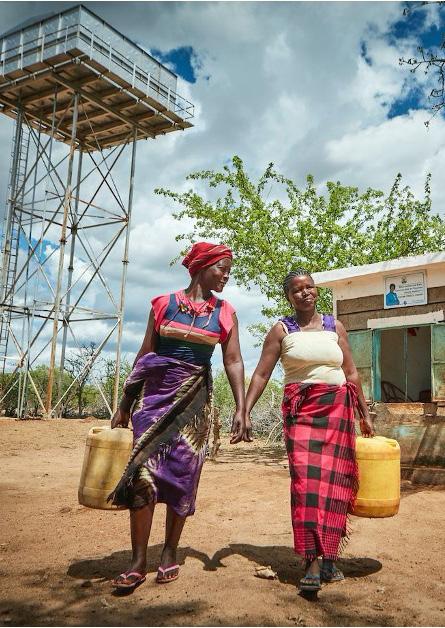
Furthermore, the company has established progressive initiatives which, among others, include Women@CCBSA. Ratshefola explains that this is a women-led network designed to create a space for women to engage, coach and mentor each other in order to ensure they have the support and inputs needed to help them reach their full potential.
Through CCBSA’s collective 5by20 initiative, the company has assisted women entrepreneurs across the Coca-Cola value chain (agricultural producers, suppliers, distributors, retailers, recyclers, and artisans) to overcome challenges when establishing and growing their business. “We are proud to have contributed toward enabling the economic empowerment of more than 6 million women around the world. Thirty-four percent—just over 2 million—of those women enabled by the 5by20 programme live and do business in Africa,” adds Ratshefola.
Being such a water-intensive business, what is CCBSA doing to conserve this precious resource? Says Ratshefola, “CCBSA has long recognised its moral and commercial responsibility to use water wisely in its manufacturing processes, and to play a significant role in helping to improve South Africa’s water security.”
The Coca-Cola Company’s Water Stewardship Strategy 2030 is based on the reasoning that water is important ‘capital’ for the company, as it is the main ingredient in its beverages. South Africa is a waterscarce country, and prone to droughts. The business has thus adopted a three-pronged strategy to water which is focused on regenerative operations, healthy watersheds, and resilient communities.
Regenerative operations are intended to reduce local shared water challenges by complying with Coca-Cola’s water stewardship requirements to prevent water wastage, reduce the amount of water being used, and safely discharge water—as well as achieve regenerative water use by reducing, reusing, recycling and replenishing within CCBSA’s operations. This strategy focuses on sustainable, efficient water usage, improving local water challenges, and partnering with others to improve watershed health and enhance community water resilience, with a stronger emphasis on helping women and girls, says Ratshefola.
CCBSA’s efforts in support of the Water Stewardship Strategy in South Africa show how a global strategy can be turned into concrete local projects.
One example, Ratshefola relates, is Coke Ville: a project bringing solar-powered groundwater harvesting and treatment for communities experiencing water insecurity. Launched in 2020, the project has expanded to a total of nine sites in Limpopo, Eastern Cape, Gauteng and KwaZulu-Natal. Each project is designed to provide these communities with 10 to 20 million litres of water annually. By the end of 2021, Coke Ville was generating more than 130 million litres of water to the benefit of more than 15 000 households.
“We have also deployed new technologies to reduce consumption and reuse wastewater. In Polokwane, which is situated in CCBSA’s most water-stressed region, the company has reduced net water consumption by 60% in 2020 and many of our facilities are now among the leaders in Africa in terms of water and energy efficiency,” adds Ratshefola.
“Innovation is at heart of what we do at CCBSA,” says Ratshefola. “CCBSA is perfectly placed to take advantage of global trends that show a definite shift toward what consumers want: more choice and sustainably manufactured beverages. Our market leading position provides an excellent platform to diversify into other beverages by targeting consumers with differentiated propositions across various market segments.”
Furthermore, CCBSA has rolled out its 2-litre returnable polyethylene terephthalate (PET) plastic bottle into more regions across South Africa. By offering a returnable PET bottle, CCBSA is creating greater value for money, as well as an incentive for consumers to collect packaging rather than disposing of it into the environment. When the PET bottle is returned, it puts money in the pockets of consumers, as they get discounts for their next purchases of similar beverages.
CCBSA seeks to operate in such a way that its operations are intrinsically linked to the sustainability of the environment in which it operates, as well as to create social value and make a positive difference for customers and the greater society, especially in the company’s host communities.
The business is investing in various initiatives to deliver on its sustainability strategy:

In recent years, CCBSA has invested in water and energy infrastructure to boost efficiency while reducing consumption and its carbon footprint.
The company has ramped up its solar power generation capacity, with its manufacturing facilities now using solar power around the country. The aim is to continue increasing solar electricity as much as possible. Further changes in energy usage will come from modernising production lines as new technology becomes available.
In 2021, CCBSA celebrated 10 years of healing the environment through its School Recycling Programme—working with over 860 schools and more than 700 000 learners around the country to successfully remove and recycle in excess of 9 100 tonnes of waste from the environment, of which 30% needed to be the PET plastics used in the bulk of CCBSA’s drinks packaging. Since its establishment in 2011, the programme has invested substantially as a crucial part of CCBSA’s commitment to help create a waste-free South Africa, in line with the Coca-Cola Company’s global commitment to create a World Without Waste by 2030.
Times are tough, and many companies are feeling the pressure—from surviving the difficult economic climate, to surviving the coronavirus pandemic.
Employee mental health and general well-being is a top priority for Ratshefola. “We have a responsibility to our people to ensure they look after themselves. Empathy and compassion trump everything else. Hence our commitment as CCBSA to put our employees at the centre of everything we do, and helping them cope and managing work-life balance.”
A challenge that is more personal is the pressure Ratshefola places upon himself: Like any leader, he wants to succeed and lead a passionate and resilient group of people—particularly during trying times. “The last two years have been unprecedented and have tested many people globally, but mainly leaders, in ways they have never been tested before. I lead from the front, and encourage the rest of my leadership to do the same. I strongly believe we can navigate these challenges and come out stronger on the other side.”
How has CCBSA embraced the changes brought about by the Fourth Industrial Revolution? Ratshefola says, “The business vision is to harness the power of data to enhance operations that further enable the company to service its customers optimally, and meet them at their needs.”
He continues, “To predict what business will look like in the future, we need to consider what we know now, what is happening around us, and consumption patterns of consumers in the future. It is almost like looking through a crystal ball, understanding megatrends and asking the questions, ‘What will be the impact on the future of the business should these trends materialise, and what type of future do we envision?’ That way, we can create a future we want. And the powerful combination of innovation and technology is driving our transformation to unlock value.”
Returnable PET is part of the Coca-Cola Company’s World Without Waste vision, which focuses on the entire packaging value chain from how bottles and cans are designed and made, to how they are collected, recycled and reused later.
“We also have various community-orientated initiatives that support the sustainable economic growth of our host communities, including the Local Distribution Partner Programme that forms part of the distribution channel for CCBSA’s products, and social upliftment programmes such as Coke Ville,” adds Ratshefola.
“Socio-economic pressures have forced consumers to think about how they spend their money,” says Ratshefola. “At no other time in recent years has the share of wallet been more pronounced or acute. This requires that we think strategically and innovatively to ensure we meet our customer needs and satisfy our consumers.”
The tough regulatory environment requires serious pivoting, the MD believes. Regulations are important in any country or environment, but they should not be at the detriment of business growth fuelled by a stable trading environment, he adds.
Ratshefola sees CCBSA as a successful company, with a solid business model that will keep it relevant in the years ahead. “We want to be a company known for how great it treats its employees and puts them at the centre of everything it does, thereby becoming an employer of choice and the best company to work for. We want to do this not because it is fashionable, but because it is the right thing to do—because, without employees, businesses will never realise their long-term vision of growing sustainably. We want our company to be recognised for the contribution it has made in society, and its proud legacy it is working toward and intends to leave for future generations.”
Images: www.facebook.com/CocaColaAfrica, www.coca-cola.co.za





Playing an enabling role in securing an adequate and nutritious supply of food to support a rapidly growing population has remained a foundational focus for the Omnia Group since its inception almost seven decades ago. This imperative has required a future-focused approach –one that empowers farmers and prioritises the growth of resilient food systems through Omnia Agriculture’s market-leading value propositions, across more than 10 markets.
According to Omnia’s agriculture marketing director Louis Strydom, “Omnia today is recognised for its holistic approach in supporting customer needs. We achieve this through access to expertise such as agronomists, R&D facilities and laboratories. We also deliver science-driven technologies that allow for precision soil health analysis, resulting in reduced inputs for water, fertiliser and other nutrients.” According to him, these innovations prioritise efficacy, crop quality and enhanced yields, emphasising sustainability for the benefit of the entire agriculture value chain.
His comments are supported by colleague Mandla Mpofu, who is responsible for Omnia’s SADC (Southern African Development Community) markets. “Our purpose of sustaining livelihoods drives our passion to see things grow. This is the motivation behind Omnia Nutriology®, our innovative approach
to agriculture that is rooted in the science of growing. Guided by our ‘feet on the farm’ practices, we collaborate with, and empower, more than one million farmers across the SADC region. Through access to our expertise and quality inputs, we help enhance crop yields and profitability, thus supporting food security. In Zambia, this translates to some emerging farmers increasing their yield by as much as 500%.”
With good soil health being a key challenge for every farmer in the world, Omnia is at the forefront of providing pioneering solutions with wide applicability. Omnia Australia is a leader in the production of K-humate products: a rich, humic-based soil conditioner and biostimulant that has a positive impact on both soil and plant health. Humic acids are naturally derived from the breakdown of plant and microbial matter, which form the foundation of all fertile soils.
They enhance nutrient efficacy and significantly reduce leeching, waste and nitrogen emissions.
K-humate thus has the potential to further improve farmer yields, the quality of produce, profits and business competitiveness by:
• Increasing fertiliser efficiency;
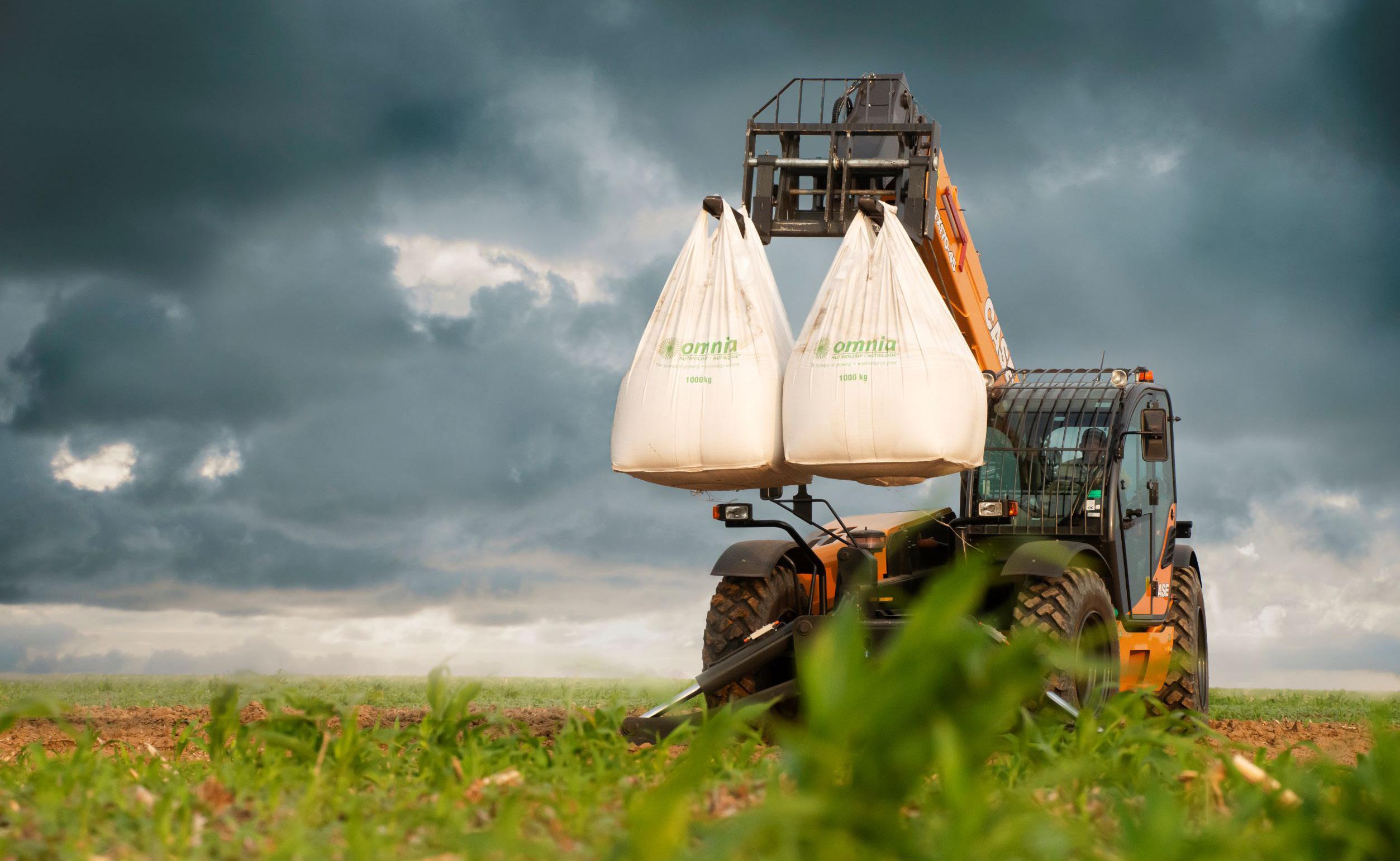
• Improving water-holding capacity;
• Bolstering the penetration and retention of calcium in the soil; and
• Enhancing good soil structure and fertility.
“We continue to expand access to our K-humate products, exporting humic acid coatings to countries with poor soil environments—exacerbated by dry conditions, scarce irrigation sources and old soil—in East Africa, SADC and South America. Our offerings continue to play a major role in bolstering macadamia production in Mozambique and in the Kenyan avocado, wheat and soybean markets,” says James Freemantle, managing director at Omnia Specialities Australia.
With the recognition and demand for greener and more sustainable agri-solutions rapidly growing, Omnia continues to leverage its talent and R&D capabilities to consistently evolve its value proposition. The business remains invested in augmenting products, services and expertise to ensure responsive solutions.
“In 2021, we put R17 million behind R&D efforts to create scientifically driven and environmentally efficient solutions. We are also developing a full Agribio hub with organic fulvates and kelp (seaweed) products as well as bacterias and fungi. Our Agribio products are playing a vital role in enabling the regeneration capabilities of soil fertility, to the benefit of communities and economies. Beyond this, our R&D strategy is focused on humic acid derivatives to appeal to more industries, such as liquid fertilisers,” continues Freemantle.
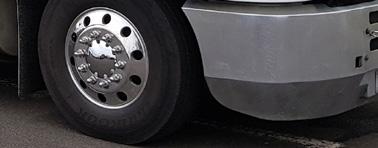
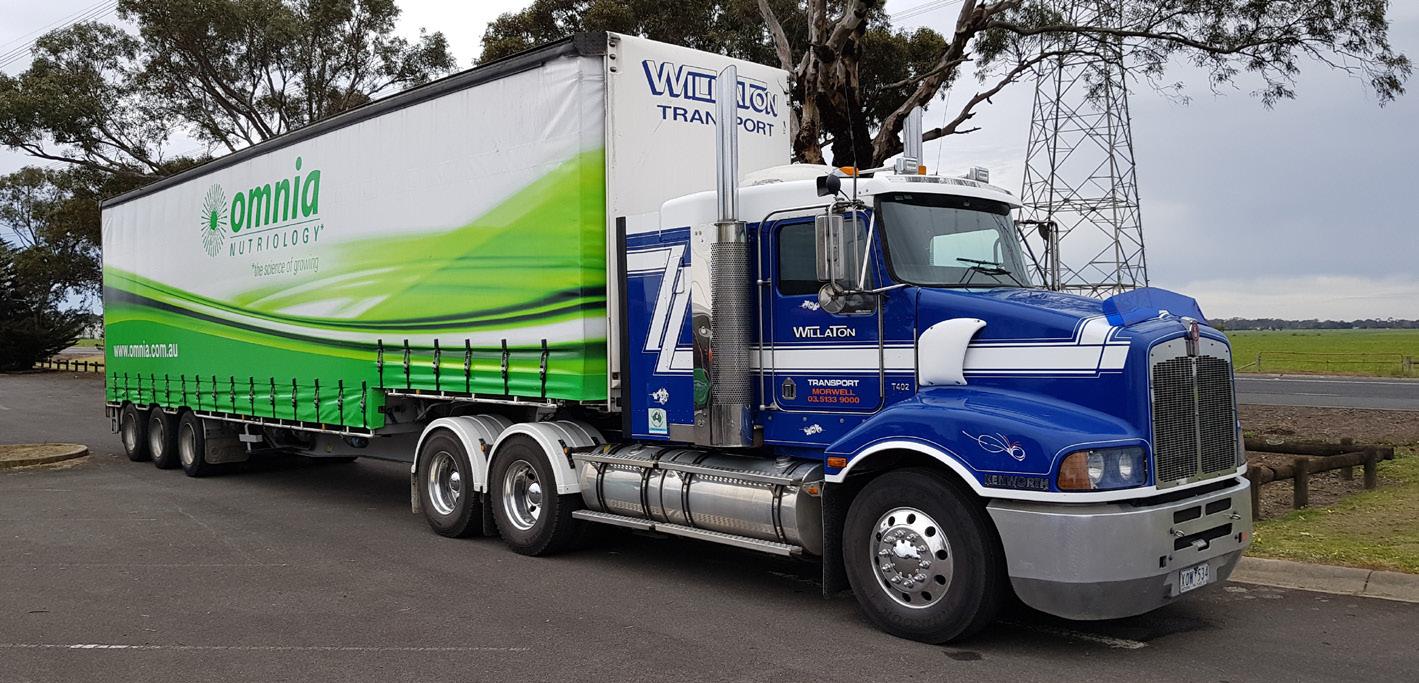
Sustainability is deeply embedded in Omnia’s business growth and stakeholder value strategy. The business has adopted a holistic approach to environmental, social and governance imperatives throughout its agriculture value chain. In addition to the products and services that enable farmers to engage in greener farming practices, Omnia has also structured its supplier selection processes in a way that empowers and develops local suppliers. The business has set prerequisites for recycled materials within its supplier selection processes, ensuring it partners with businesses that align with its sustainability principles.
“We hold ourselves to a high standard, aligning our business strategy to our sustainability and environmental agenda. Reducing our carbon footprint throughout the group is a key consideration in how we do business,” says Mpofu.
Omnia’s supply chain journey exemplifies this. In the past year, the group has diversified its transport utilisation to include rail into the SADC region. Omnia’s
Omnia Nutriology R&D: Omnia customers have access to expertise such as agronomists, R&D facilities and laboratories

rail service’s greenhouse gas emissions (GHG) are significantly lower than other forms of transport. Between 2020 and 2021, Omnia’s GHG emissions reduced by more than 363 091 tonnes. This reduction is equivalent to the annual emissions of about 79 000 vehicles.
Omnia’s holistic approach to agriculture reflects the principled way in which the group conducts business. Mpofu adds, “We embed sustainability throughout our product value chain, offering solutions centred around bolstering the efficiency of our products, enhancing outcomes and profitability for customers and partners, reducing environmental impact and helping securing food supply across the markets we serve.”
Strydom concludes, “South Africa is a producer of quality produce for demanding international markets, where there is a strong push for environmentally friendly products. Omnia ensures farmers do the right things at the right times, using the right products.”

Established nearly 70 years ago, Omnia is based in South Africa and listed on the Johannesburg Stock Exchange. Operating across 25 countries, Omnia is expanding its presence across SADC, North America, Canada, Brazil and Australasia. Internationally recognised for innovative research and development, Omnia differentiates itself based on its leading supply chain and manufacturing capabilities, as well as its specialised customer solutions that are accessible to clients in the agriculture, mining, water, consumer care, food and pharmaceutical, coatings as well as manufacturing sectors.
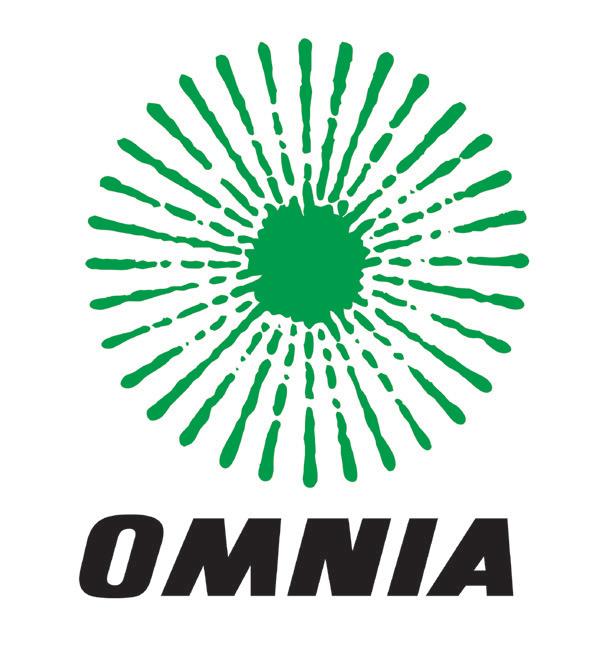
Leading the field in the way it incorporates used oil into its emulsion explosives, Omnia Group company BME is extending the benefits of this growing sustainability initiative to mining customers and other approved partners.
With its innovative culture and decades of successful blasting operations, BME has become the leading consumer of used oil in the explosives sector. This harmful waste product is used as a fuel agent in the company’s high-quality emulsions, ensuring that it is safely disposed of during the blasting process.

“Through our large collection network, we can ensure that used oil from customers and other sources does not find its way into valuable water resources or soil as a contaminant,” said Ramesh Dhoorgapersadh, BME’s General Manager for Safety, Health, Environment and Quality (SHEQ). “This helps us fulfil the Omnia vision of protecting life, sustaining livelihoods and creating a better world.”
BME consumes almost 25-million litres of used oil annually in South Africa alone and plans to increase its collection and processing capacity steadily in the years to come. It has been estimated that it takes only a litre of oil to contaminate a million litres of water, making the safe disposal of oil a strategic global imperative – especially for water-scarce countries. Dhoorgapersadh emphasised the alignment of BME’s used oil initiative with the United Nation’s Sustainable Development Goals (SDGs) – which focus on goals such as access to clean water, food security and eradicating pollution.
“It is important to appreciate the ecosystem impact of oil in the environment,” he said. “Contamination not only poisons
water but can affect food security by undermining the health of soil and agriculture.”
BME was therefore reaching out to partner with mining and other players to promote the SDGs in pursuit of a sustainable future for the planet. He emphasised, however, that the collection, testing, treatment and utilisation of used oil is a complex and demanding process. It cannot be reliably conducted without a robust infrastructure and meticulous attention to quality in every step of the operation.

Dirk Voogt, BME’s General Manager for Production and Logistics, explained that the company’s oil collection network has evolved over many years – aligning each phase with its ISO 9000 quality certification. It is also registered as an approved collector and processor with the Recycling Oil Saves the Environment (ROSE) Foundation.
“Our extensive logistical arrangements include taking used oil from our mining customers, but also from our network of 11 approved suppliers – or bulking points,” said Voogt. “The oil is processed and tested at our dedicated facility in Delmas, from where it can be channelled into our emulsion production.”
Driving its increasing consumption levels is BME’s expanding business and its leading emulsion technology which can incorporate steadily higher proportions of used oil in comparison to conventional fuel agents. He notes that its used oil capability is not limited to South Africa but has been applied for mining customers as far afield as West Africa and Indonesia.
“We can collect all the used motor oil from a mine’s vehicles on a regular basis, providing a safe and environmentally sound service that is very convenient for the customer,” he said. “The responsible disposal of the oil in our emulsion adds another dimension to our partnership with mining customers – supporting their sustainability efforts while reducing their logistical load and environmental risk.”
The environmental, social and governance (ESG) benefits extend further than this, said Sachin Govender, Used Oil Manager at BME. He explained that small businesses are among the most important contributors to the success of the company’s used oil collection network. The initiative therefore creates long-term business opportunities in the local economy, stimulating entrepreneurial activity and generating jobs.
“Our infrastructure relies on small and micro-businesses to collect oil in a compliant manner from a range of sectors outside mining such as vehicle maintenance workshops,” said Govender. “This has led to a bulking point network that already provides employment for over 120 people in South Africa.”
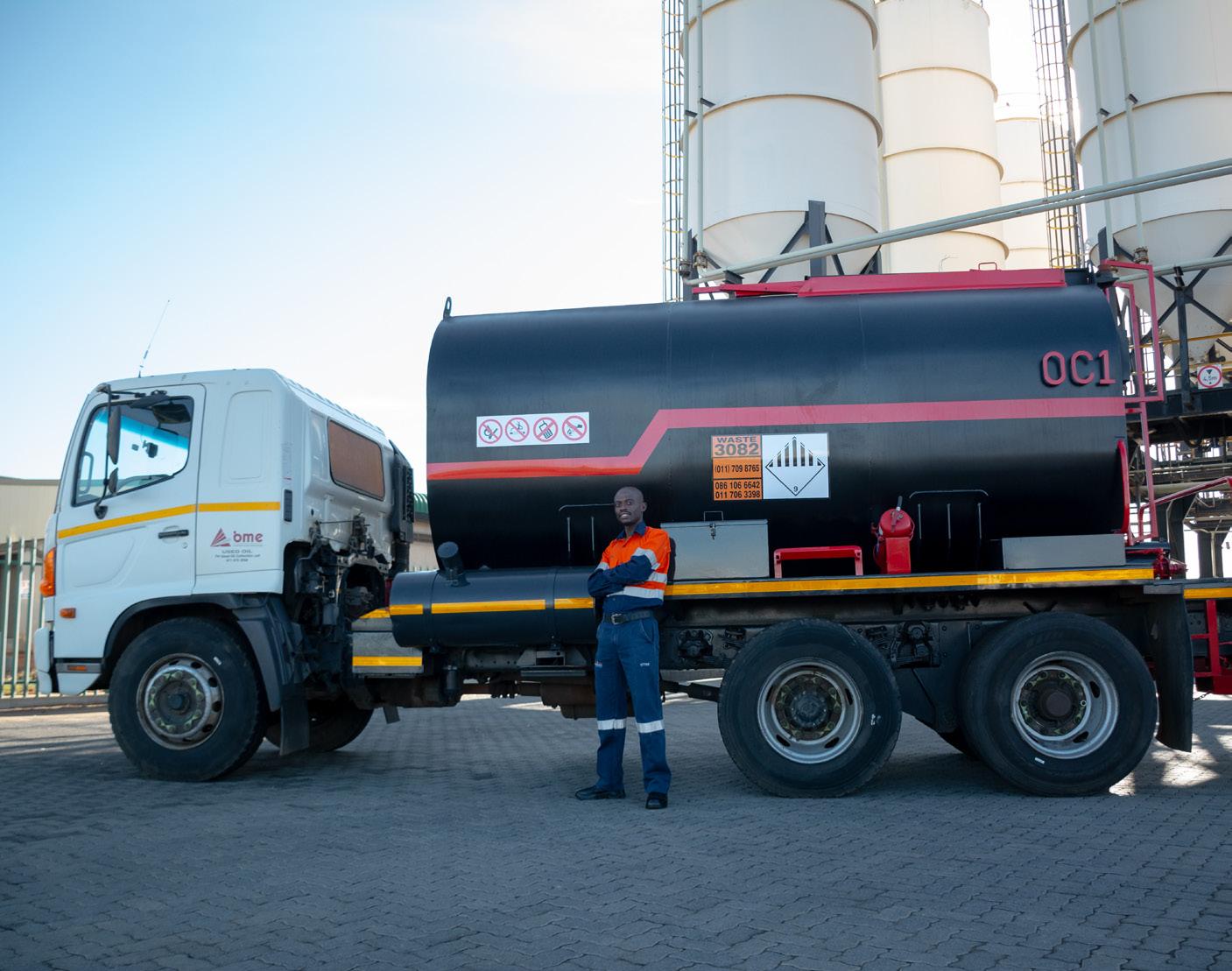
He noted that BME is expanding this initiative into neighbouring countries where it can draw on small – even informal – businesses to collect used oil, thus creating demand in the local economy. The company’s regular and growing demand for used oil provides a solid platform for these small businesses to develop their expertise and standards, so they can fulfil this demand into the future.
Voogt highlighted that the used oil methodology employed in Indonesia is applied on a remote mining site, where BME manufactures emulsion for its customer. Despite the remote location, the manufacturing process can achieve loading levels – of used oil relative to virgin fuels – similar to those in South African operations.
“We are also taking this technology into our other operations around the globe,” he said. “Wherever there are sufficient sources of used oil, we can put the equipment and processes in place to support the principles of a more circular economy.”

The important impact of BME’s used oil initiative was recently recognised by the Chemical and Allied Industries’ Association (CAIA). In CAIA’s annual awards to the sector, it gave BME the Responsible Care® initiative of the year award in the Category A segment
To watch a video about BME’s used oil initiative, visit the links below: https://watch.wave.video/V7uPc0WI76VXmCes OR https://youtu.be/q-T4UYjQaJE

still need to manage exponential growth of information, adoption of new technologies with accelerated digital transformation, industry disruption and global crises such as the political issues facing the United States, Russia and China.
While developed countries are focusing on risks such as climate change and harm to biodiversity, in the South African context, immediate risks include social unrest and economic collapse.

Emerging from the pandemic and striving to become a nation that owns its future will require urgent action. We know by now what needs to be done—that we need ethical and visionary leadership to get it done—and that we need to hold people responsible for their performance. That performance must be linked to consequence management.
What does this mean from a risk competency point of view? The following competencies are required to remain and grow as a future-fit risk professional:
management and quality decision making, guided by the IRMSA Integrated Strategy, Risk and Resilience Guideline.
• An increase in risk practitioners’ competency in risk and resilience, through applied risk-management skills building, support programmes, risk-management training, and risk-leader mentorship interventions.
• Support of boards, oversight bodies, executive management and line management in the comprehension of the value of risk management and realising the benefits of an effective risk management capability to support them in quality decision making.
IRMSA, as the only professional body for risk management in South Africa as recognised by the South African Qualifications Authority (SAQA), promotes and develops credible risk professionals.
The Institute of Risk Management South Africa (IRMSA), under the leadership of CEO Pat Semenya, serves aspiring risk practitioners, risk professionals and decision makers in southern Africa dedicated to the advancement of the risk management profession.
The institute serves all its members and aspiring risk professionals by providing technical guidance and support via its online technical library.
It also provides globally recognised qualifications and has a network of corporate members and employers - ensuring that their members are employed in all industries and across the public and private sector globally.
Through research and thought leadership, the institute publishes the South Africa Risk Report on an annual basis as well as the globally recognised IRMSA Guideline on Integrating Strategy, Risk and Resilience. Through these publications, IRMSA sets the standards for the risk profession. These are standards that define the knowledge, skills and behaviours that today’s risk professionals need in order to meet the demands of an increasingly complex business environment.
The coronavirus pandemic highlighted the weaknesses in public and private leadership responses to it. In addition to the obvious challenges of the past two years, organisations
• Strategic and innovative leadership from the risk professional’s office, projecting courage, accountability and continuous learning and education.
• An enabling and applied risk-management approach and delivery.
• Scenario planning and the crafting of alternative futures for one’s organisation, resulting in options available that enable speedy and quality decisions that lead to timeous action.
• Adopting and adapting to the strategic and operational benefits of digital transformation in the enterprise risk management space, enabling timely and effective response strategies to threats and opportunities, near real-time reporting, and faster quality decisions.
• Integrated strategic thinking to make sense of uncertainty, understanding the big issues that can significantly threaten or benefit the organisation, contributing to the debate inside and outside the organisation, guiding decision making, and ensuring strategic objectives are achieved.
• Implementing a continuous cycle of learning from mistakes, recalibrating and redesigning of strategies to ensure risk response strategies reflect the unfolding situation and the building of a resilient culture.
The outcomes of building the suggested IRMSA risk management competency/capacity profile are:
• Improved governance through accountability
This is done by providing the following professional support in both the public and private sector:
• Complete range of training covering strategy, risk and resilience for risk professionals and organisational leadership in both the private and public sectors;
• Full learnership services from student selection, planning, project management, training, mentorship and support, to work placement and follow-up support;
• Internships and work-integrated learning opportunities;
• Mentorships and coaching;
• Competency assessments;
• Blended learning solutions; and
• Board exams to acquire the risk management designations (CRM Practitioner and CRM Professional), the two most important risk-management designations registered with SAQA.
For more information on IRMSA, visit www.irmsa.org.za
For the 2022 IRMSA Risk Report, visit www.irmsa.org.za/Risk-Report-2022
For the 2022 Guideline on Integrating Strategy, Risk and Resilience, visit www.irmsa.org.za/guideline
Follow IRMSA on social media:
Twitter: @IRMSAInsight
Facebook: @IRMSAInsight
LinkedIn: The Institute of Risk Management South Africa – IRMSA
The Institute of Risk Management
South Africa is dedicated to the advancement of the risk management discipline




Addressing energy poverty will take a multi-resource approach in Africa


How can Africa be expected to leapfrog to a renewable energy future without the adequate financing to do so?
The African continent has the most people without access to energy, and yet also represents the continent with the fastest growing population. As demand continues to far outweigh supply, energy poverty becomes more of a crisis across the continent.
In order to address this crisis and achieve the United Nations Sustainable Development Goal 7—universal access to affordable, reliable and sustainable electricity—NJ Ayuk, executive chairperson of the African Energy Chamber (pictured), has outlined a strategy.
Speaking during the January 2022 edition of the Rystad Talks Energy webinar—a platform for enhanced dialogue on Africa’s economy, led by Rystad Energy CEO Jarand Rystad—Ayuk emphasised that in order to address energy poverty, Africa needs to have a multi-resource approach, whereby the continent utilises all its natural resources in the short term, slowly reducing the reliance on oil and coal in the medium term through the uptake of natural gas, and transitioning to cleaner sources in the longer term.
“If we want to look at a solution, we need to make sure we create the energy we need immediately and use the resources we have. We have to use all forms of energy we have. Climate change is a big problem, but we also have 600 million with no access to electricity and 900 million with no access to clean cooking. We should be able to use oil, natural gas and, in some stages, coal. We need to move toward renewable energies and carbon capture, but still continue to fight for poor people,” he said.
“We need to look at the wealthy nations to cut down emissions and then address Africa. We are all in this together. Right now we have a crisis in Europe where people are turning to coal. They are changing regulations to start looking at gas. We can phase out coal and do it fast, but we need to explore other resources in the short term, like gas.”
Specifically, Ayuk reaffirmed both his and the AEC’s position on natural gas, emphasising that the resource has a critical role to play in Africa’s energy transition. The problem lies not with leapfrogging to the future—as is seen in other sectors such as telecommunications, where Africa has made considerable progress with mobile money platforms—but rather in the unrealistic expectations of the West. How can Africa be expected to leapfrog to a renewable energy future without the adequate financing to do so?

Meanwhile, Africa’s struggle with energy poverty can be attributed to a variety of factors, some of which include the continent’s reliance on foreign aid; ineffective resource
management; and tight market controls. By addressing these factors, Africa can not only open up its market, spurring business across multiple sectors, but establish domestic capital-raising opportunities that will improve investment across the energy sphere.
“We have to be honest, it’s poverty. Poverty causes energy poverty. Africans are also responsible for this. We have relied on foreign aid and waiting for someone to come and do things that we have been able to do ourselves. We have not managed our natural resources well. If we focus on revenues and building power plants, we could have had fast-tracked industrialisation. We have relied on multinational institutions and development partners, and they have not met commitments. I am a big fan of free markets, individual liberty and letting the markets work for themselves. We need to change in Africa because we deserve better,” Ayuk stated.
Inadequate infrastructure and the blocking of financing by international organisations is problematic. European countries, for example, are still using African gas to power their economies—which is fair—and yet African gas investment has been restricted. Africans, like the West, have a right to develop their resources, working together with international investors to power Africa and accelerate industrialisation.
In order to increase investment and drive renewable energy development, Africa needs to implement structural reforms within its energy sector by focusing on creating enabling environments for investment; introducing attractive fiscal terms for foreign players; and incentivising increased private sector participation in the sector.
“We have to do bigger things in Africa. We need to make it easy to do business, we need to become more transparent, we need to fasttrack projects, cut our bureaucracy and really take a look in the mirror. With every day that we have a child in Africa going to bed without lights, we take away opportunity from that child. Energy poverty should be the fight of our lifetimes,” Ayuk concluded.
While foreign capital is important, African institutions also have a role to play in driving the continent’s energy growth. Accordingly, facilities such as the African Energy Bank could not only meet demand for capital in the renewable energy space, but enable the effective development of oil and gas resources across the continent. The creation of an African Energy Bank will open up critical solutions for Africa’s energy sector.
African Energy Chamber (www.EnergyChamber.org)“We need to move toward renewable energies and carbon capture, but still continue to fight for poor people.”

Groundwater could help kickstart green recovery in African countries: how to begin

African leaders have joined a worldwide thrust for a ‘green recovery’ from the COVID-19 setback and the climate crisis. As the African Union’s Green Recovery Action Plan (bit.ly/3NqT3oJ) puts it, this essentially means investing in the sustainable use of resources. A joint statement (bit.ly/3uAJ8Et) endorsed by 54 African leaders emphasises the continent’s need to develop “based on a deep understanding of climate risks”.
Research (bit.ly/35l6WU2) suggests such green recovery strategies—especially in agriculture and food security—could draw on a relatively underdeveloped resource: groundwater.

Groundwater is water under the surface of the ground, typically accessible via wells and boreholes. It is not visible like a great river. This can be beneficial because groundwater is less exposed to evaporation and surface pollution.
Groundwater has supported impressive spurts of development in some parts of the world. California’s irrigation and industrial boom, India’s green revolution, and China’s national grain production increase are examples.
But in sub-Saharan Africa, groundwater does not get such attention. Rather, regional water resource management focuses on surface water development. The Nile Basin Initiative (www.nilebasin.org) and the Zambezi River Authority (www.zambezira.org) are two such examples. There are not any high-profile groundwater authorities.
Knowledge about groundwater is scarce in some countries. Development tends to be informal and limited to shallow use. This contributes to the belief that groundwater resources in sub-Saharan Africa are not large enough, or conveniently located, to significantly contribute to socio-economic development.

But our synthesis of regional findings (bit.ly/3Loi4iq) suggests otherwise.
Combining data on the physical availability of groundwater with information on politicaleconomy factors, our study revealed that groundwater is by far the largest regional water resource by volume. Annual renewable groundwater in the region is equivalent to 15 years of average total flow of the Nile River. We also found that renewable groundwater is often available where it is most needed and at depths of less than 100 metres.
Strikingly, we found that less than 5% of the region’s renewable groundwater is being used. Its potential for sustainable use is tremendous.
 The correlation between groundwater abstraction and total grain production in China from 1950 to 2011. (Source: Jie Liu and Chunmiao Zheng)
The correlation between groundwater abstraction and total grain production in China from 1950 to 2011. (Source: Jie Liu and Chunmiao Zheng)
a. Depth to groundwater across sub-Saharan Africa. (Source: Alan Mackenzie Macdonald et al. 2012); b. Groundwater recharge across sub-Saharan Africa. (Source: Federal Institute for Geosciences and Natural Resources, Germany, and Unesco 2008)
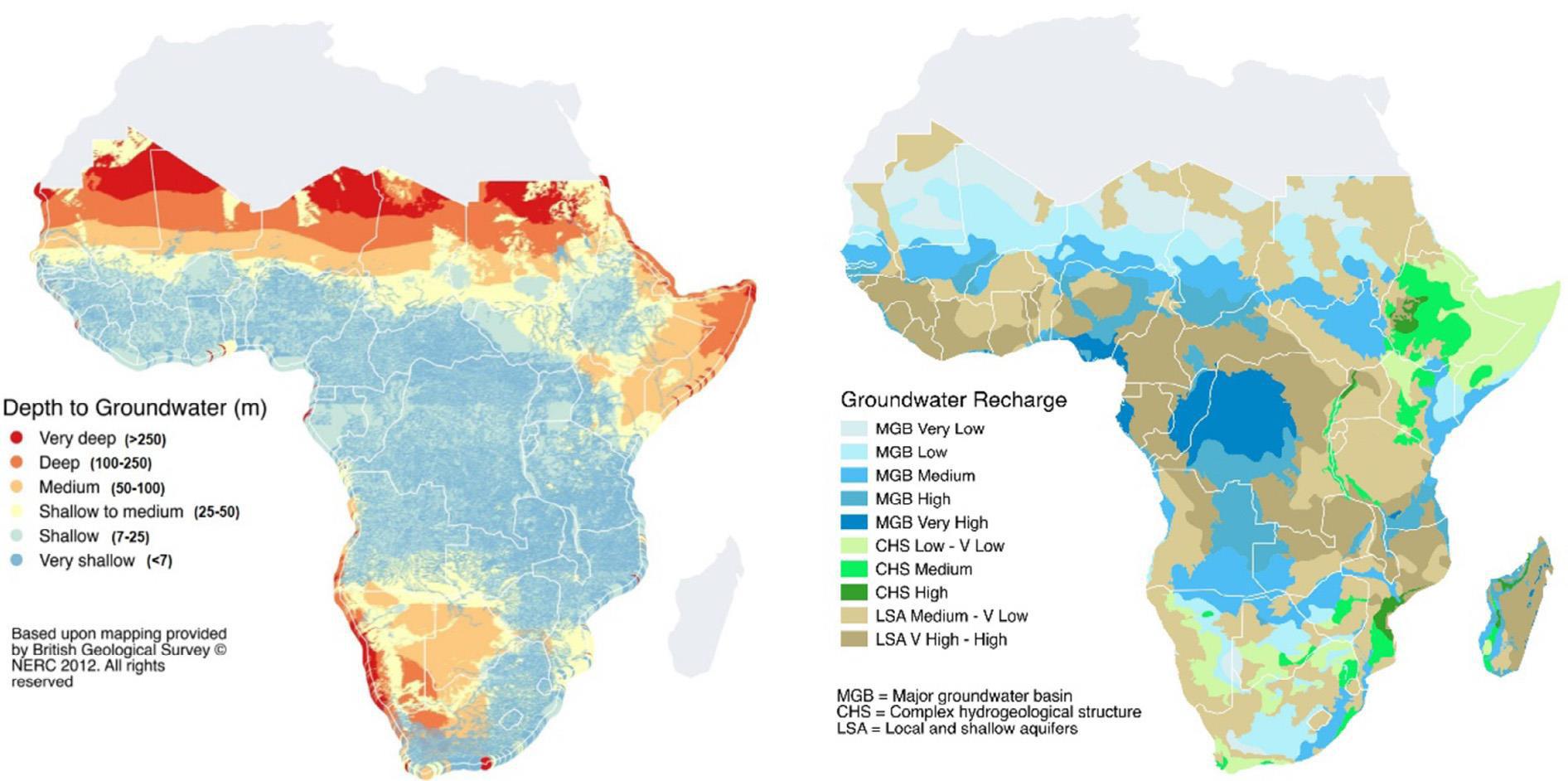
Various studies also support our technical findings. A recent study (bit.ly/36VmMVW) found opportunities for sustainably withdrawing groundwater across much of the continent. In short, there is an opportunity for a renewed regional focus on sustainable groundwater development.
Our findings suggest groundwater could support critical sectors across the region.
For example, it could help increase sub-Saharan Africa’s current irrigated land area, which is currently 3% (bit.ly/3iP3qV2).
Groundwater could increase per capita water consumption, currently the lowest globally (bit.ly/36SdmKR).
It could help cities guard against shocks such as the “Day Zero” water crisis in Cape Town, South Africa (bit.ly/3IPSX6C). And it could lessen the impacts of recurrent droughts (bit.ly/3LtN2FJ).
Stronger regional water and food security could support poverty reduction (bit.ly/3DkBGRI), economic structural change (bit.ly/3tS8f6B) and a transition to higher value-added activities (bit.ly/3JZ1y8s). Ultimately, these could contribute to greater regional prosperity (bit.ly/3tOxZ3r).
Preliminary results from an economic simulation in Uganda (bit.ly/3IKff9K), for example, found that doubling
investment in sustainable groundwater development could increase agricultural GDP by 7%, create 600 000 jobs, and alleviate poverty for half a million people nationally by 2030.
cost and availability of drilling equipment and pumps, among others.

There are already examples of how innovation and leadership in the region can unlock this potential. A managed aquifer recharge scheme in Windhoek, Namibia (bit.ly/3qM1Ckl)—the driest capital in the region—is an engineering and financial success for city water supply. The scheme also preserves the fragile Okavango River.
The cost of technologies such as renewable energy and desalination is falling. They offer further possibilities, coupled with approaches such as farmer-led irrigation development and improved end-use efficiency measures.
Groundwater has the potential to support broad economic, humanitarian and social development in sub-Saharan Africa. It has done so in other regions globally. But resource development must be sustainably managed.
There is no denying the potential for pitfalls. For example, overexploitation of groundwater in some parts of California has led to water stress and land subsidence (on.doi.gov/3qOyIA1). Consolidating such international lessons with recent regional experiences (go.nature.com/3K4mXNa) could inform sustainable groundwater governance in sub-Saharan Africa from the outset.
As a starting point, a framework for action could include raising the profile of sustainable groundwater development potential in the region. The emphasis should be on ecosystem health and empowering vulnerable communities.
There is evidence that macro policy support in China, New Deal (bit.ly/3iMS0S0) infrastructure in the United States, and electricity pricing policy in India all helped kickstart largerscale groundwater development (bit.ly/3qM706T).
Understanding political economy factors in subSaharan Africa is vital to unlocking the potential benefits of groundwater development and managing trade-offs. Such factors include land rights and tenure, energy availability and price, access to credit, and the
The year 2022 presents promising opportunities. In February, addressing the African Union, the United Nations SecretaryGeneral highlighted (bit.ly/3uwRKfe) the importance of green recovery to ignite economic recovery. The AU’s theme of 2022 focuses on transforming food and agricultural systems (bit.ly/3DntFLU). Groundwater, which is the theme of World Water Day 2022 (www.worldwaterday.org), can help respond to such calls to action.
Bradley Hiller Former AsiaGlobal Fellow Asia Global Institute University of Hong Kong Jude Cobbing Adviser: Water Governance and Infrastructure Save the Children USGroundwater could help increase sub-Saharan Africa’s current irrigated land area, which is currently 3%.

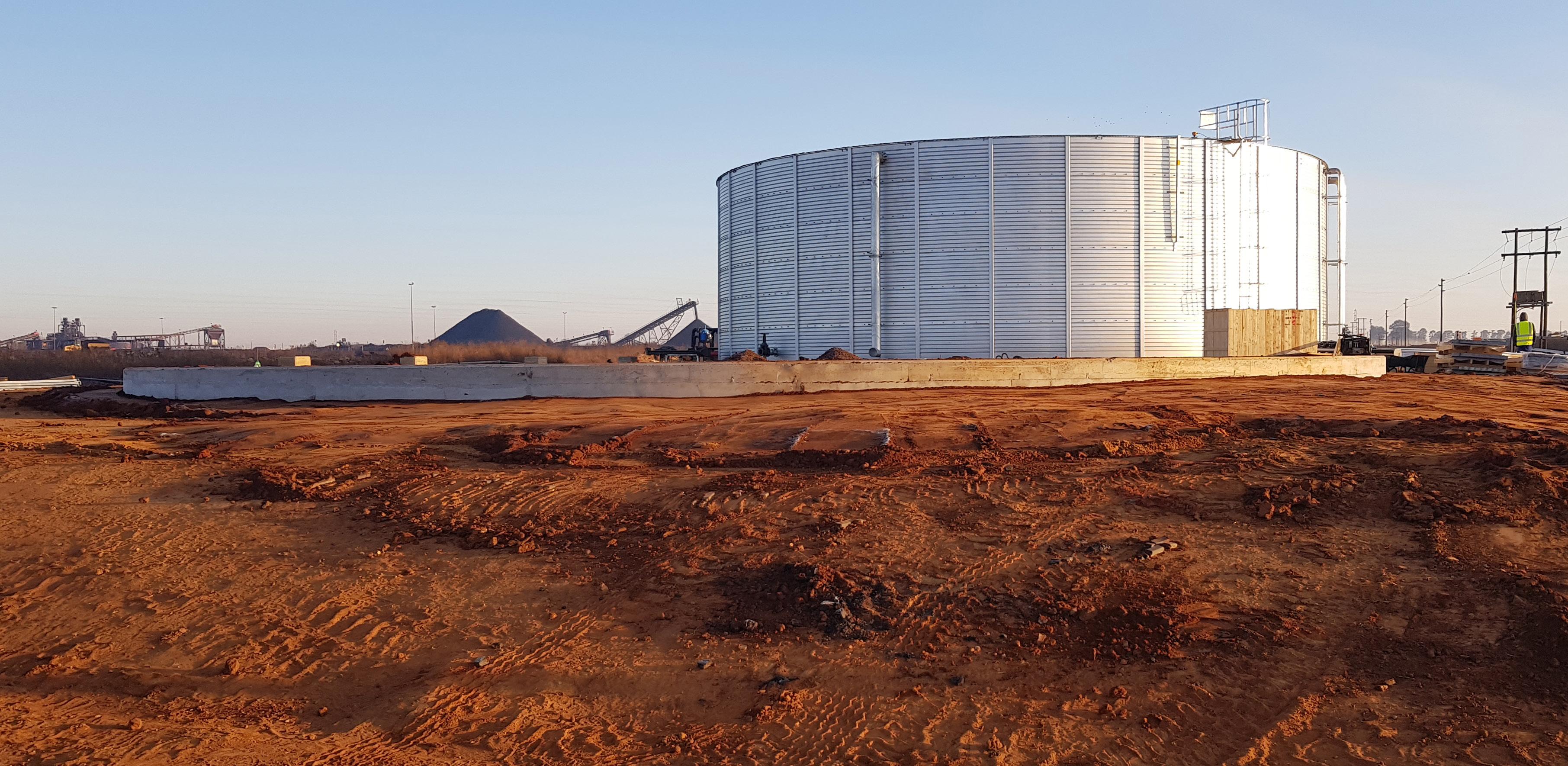

Why Europe can look to Africa as a preferred gas supplier
African gas producers need to improve policy planning and enactment, and deal with negotiation to make themselves attractive markets to partner with.

ith recent sanctions on Russia by Western nations threatening the critical supply of Russian gas to European markets,
Wan opportunity has emerged for African gas producers to step up—enhancing hydrocarbon production and exports to meet international supply gaps.

Significant progress has already been made to establish Africa as a viable gas export market, and now, with geopolitical tensions rising, Africa should focus on establishing itself as the preferred supplier
to international markets.
The withdrawal and disruption of supply channels from Russia—as the second largest gas producer globally and the biggest supplier of natural gas to Europe— will not only send Europe into a deeper energy crisis, but will cause price hikes globally. However, this represents a golden opportunity for Africa.
On 22 February 2022, member states of the Gas Exporting Countries Forum (GECF) met in Doha, Qatar to discuss the impact of the mounting tensions between Russia and Ukraine and its impact on the global gas market. In the Doha Declaration—issued after the meeting concluded—parties emphasised that despite their commitment to increasing gas production to meet growing energy demand globally, they do not have the capacity to help Europe replace 40% of its energy consumption in the event Russia cuts supply. These commitments will not only be critical for Europe’s energy crisis but for Africa’s sectoral expansion.
In an exclusive interview with the African Energy Chamber (AEC) in February, Gabriel Mbaga Obiang Lima, Equatorial Guinea’s Ministry of Mines and Hydrocarbons, said: “Infrastructure is going to be critical. Investors in Europe may be selling solutions to be able to put as many terminals as possible, which will allow us to export gas to them. That is what we need in order to be competitive in gas.”
African producers can take advantage of the outcome to attract investments required to build infrastructure that would enable them to expand exploration, production and exportation to meet the anticipated increase in demand in Europe. “The ongoing European energy trilemma and challenges provide a golden opportunity for
African gas producers to develop a robust, bankable gas strategy to cater for motherland Africa and our European friends’ energy demand. I believe Africa can leverage current trends to attract much-needed investment to develop the infrastructure needed to accelerate production for regional consumption and exportation. The time to act on the Trans-Africa Gas Plan is now,” stated Abdur-Rasheed Tunde Omidiya, president of the AEC Nigeria and West Africa.
Already, African countries have started ramping up production. The AEC, in its Q1 2022 Outlook, predicts Nigeria to increase gas production from 2016 of about 1 550 billion cubic feet to up to 1 780 billion cubic feet in 2022. These production increases will enable Nigeria to increase domestic capacity, ensuring energy security both domestically and continentally, while creating the opportunity to scale up exports to European markets.

Other African producers such as Algeria and Niger who, together with Nigeria, recently signed the Declaration of Niamey during the Economic Communities of West African States Mining and Petroleum Forum—paving the way for the construction of the multibillion 4 128-kilometre Trans-Saharan Gas Pipeline that will run through the three countries into Europe—now have an opportunity to attract funding for the project rollout and expand
their production and exportation capabilities to Europe. Once completed, the pipeline is expected to transport 30 billion cubic metres of gas per annum, which Europe will desperately need to meet demand.
Algeria’s proximity to the European market makes the North African country of strategic importance as a potential gas supplier for Europe. Algeria, the world’s sixth largest gas exporter and the largest gas producer in Africa, has already expressed its plan to double exploration and production in the next five years. In 2021, Algeria increased its export volumes to Europe to 53 billion cubic metres from 40 billion cubic metres in 2020, and is estimated to export 46 billion cubic metres or more in 2022 as demand in Europe is expected to continue rising.
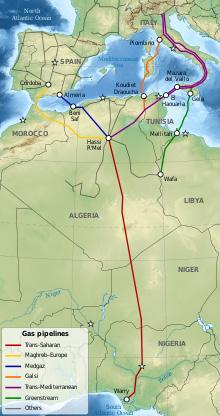
At the same time, Equatorial Guinea, with over 1.5 trillion cubic feet of natural gas reserves that remain untapped, can also take advantage of the anticipated European gas crisis to attract more investment for its natural gas market growth and development.
African gas producers need to improve policy planning and enactment, and deal with negotiation to make themselves attractive markets to partner with.
 African Energy Chamber (energychamber.org)
African Energy Chamber (energychamber.org)
“The time to act on the Trans-Africa Gas Plan is now.”

Oil price shocks have a long history, but today’s situation may be the most complex ever

Many factors can trigger oil price shocks.

The world is in the grip of an oil price shock. In just a few months, prices have risen from US$65 a barrel to over $130 (bit.ly/3qGrVbg)—causing fuel costs to surge, inflationary pressure to rise and consumer tempers to flare. Even before Russia’s invasion of Ukraine, prices were climbing rapidly because of roaring demand and limited supply growth.
Price shocks are not new. Viewed historically (bit.ly/3NrLmyx), they are an integral


part of oil market dynamics, not anomalies. They have occurred since the birth of the industry (bit.ly/3wIkSTr).
Many factors can trigger oil price shocks. They include large shifts in either demand or supply anywhere in the world, since oil is a global commodity. Shocks can also result from war and revolution; periods of rapid economic growth in major importing nations; and domestic problems in supplier countries, such as political conflict or lack of investment in the oil industry.
Overall, the worst spikes have combined two or more of these factors—and that is the situation today.
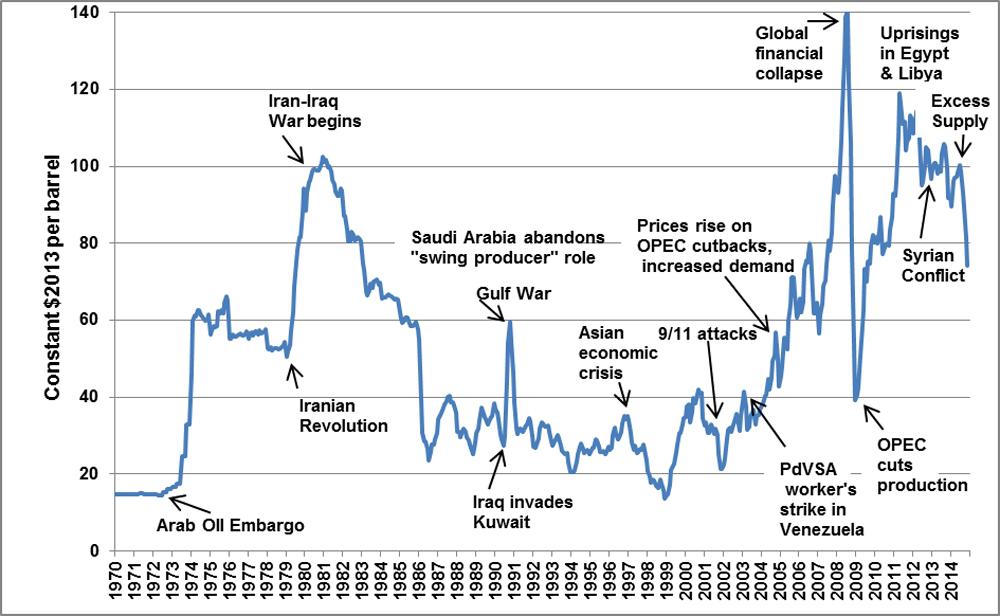 Crude oil prices react to many types of geopolitical events, from weather disasters to wars, revolutions and economic growth or recessions. (Source: US Department of Energy)
Crude oil prices react to many types of geopolitical events, from weather disasters to wars, revolutions and economic growth or recessions. (Source: US Department of Energy)
Currently there is no way to know how long the factors driving it will last, or whether prices will go higher
Global oil production began in the mid-1800s and grew rapidly in the first half of the 20th century (bit.ly/3iJFtia). For much of that time, oil majors—companies like Chevron, Amoco and Mobil, which were created after the Supreme Court ordered the breakup of Standard Oil in 1911 (bit.ly/3tJnNcA) —operated effectively as a cartel, maintaining production at levels that kept oil abundant and cheap to encourage its consumption.
This ended when Iran, Iraq, Kuwait, Saudi Arabia and Venezuela formed the Organization of Petroleum Exporting Countries (OPEC) in 1960 (bit.ly/3JNxE6U), nationalising their oil reserves and gaining real supply power (bit.ly/3wJ4fXS). Over the following decades, other nations in the Middle East, Asia, Africa and Latin America joined—some temporarily, others permanently.
In 1973, Arab members of OPEC cut their oil production when Western countries supported Israel in the Yom Kippur War with Egypt and Syria (bit.ly/36Uo9UH). World oil prices shot up fourfold, from an average of $2.90 per barrel to $11.65 (bit.ly/3tMA6oM).
In response, government leaders in wealthy countries introduced policies to stabilise oil supplies. These included finding more oil, investing in energy research and development, and creating strategic oil reserves that governments could use to mitigate future price shocks.
But six years later, oil prices more than doubled again when Iran’s revolution halted that country’s output. Between mid-1979 and mid-1980, oil rose from $13 per barrel to $34 (brook.gs/35hSoEJ). Over the next several years, a combination of economic recession, replacing oil with natural gas for heating and industry, and shifting to smaller vehicles helped mitigate oil demand and prices (on.cfr.org/3uFZonM).
The next major shock came in 1990 when Iraq invaded Kuwait (bit.ly/3JYRMmo). The United Nations imposed an embargo on trade with Iraq and Kuwait (bit.ly/3wKBsSG), which raised oil prices from $15 per barrel in July 1990 to $42 in October ( bit.ly/3NqFcia). US and coalition troops moved into Kuwait and defeated the Iraqi army in just a few months. During the campaign, Saudi Arabia increased oil production by more than 3 million barrels per day (bit.ly/3NuUwKs), roughly the amount previously supplied by Iraq, to help dampen the increase and shorten the period of higher prices.
More disruptive price shocks occurred in 2005–2008 and 2010–2014. The first resulted from increased demand generated by economic
growth in China and India (on.cfr.org/3DkmdBm).
At that time, OPEC was unable to expand production due to long-term lack of investment.
The second shock reflected the impacts of Arab Spring pro-democracy protests in the Middle East and North Africa (bit.ly/3iF4Z83), combined with conflict in Iraq and international sanctions that Western nations placed on Iran to slow its nuclear weapons programme. Together, these events pushed oil prices above $100 per barrel for a four-year stretch—the longest such period on record (bit.ly/3INbyzU). Relief finally came via a flood of new oil from shale production in the US (bloom.bg/3iFnaKG).
Today, multiple factors are raising oil prices. There are three key elements (bit.ly/3NlHTBD):
• Oil demand has grown more rapidly than expected in recent months as countries emerged from pandemic lockdowns.
• OPEC+, a loose partnership between OPEC and Russia, has not raised production at a commensurate level, and neither have US shale oil companies.
• Countries have drawn on stocks of oil and fuel to fill the supply gap, reducing this emergency cushion to low levels.
These developments have made oil traders worry about looming scarcity. In response, they have bid oil prices up (bit.ly/3LqIujL). It is worth noting that while consumers often blame oil companies (and politicians) for high oil prices, these prices are set by commodity traders (bit.ly/36RPFm2) in venues such as the New York, London and Singapore stock exchanges.
Against this backdrop, Russia attacked Ukraine on 24 February 2022. Traders saw the potential for sanctions on Russian oil and gas exports and bid energy prices even higher.
Unexpected factors also have emerged. Major oil companies including Shell, BP and ExxonMobil are ending their operations in Russia (bit.ly/3qGjnBu). Spot market (bit.ly/3qJva1Y) buyers have rejected seaborne Russian crude (bbc.in/3NvxCTh), probably for fear of sanctions.
And on 8 March, the US and UK governments announced bans on imports of Russian oil (on.ft.com/3qFG6xi). Neither country is a major Russian buyer, but their actions set a precedent that some analysts and traders fear could lead to escalation (bit.ly/3iJAvSg), with Russia reducing or eliminating exports to US allies.
In my view, this set of conditions is unprecedented. It reflects not just increased complexity in the global market, but also an imperative for energy firms—which already are under pressure from shareholder climate activists—to avoid further reputational damage and leave one of the most oil-rich countries in the world. Some companies, such as BP, are abandoning assets worth tens of billions of dollars (reut.rs/3uwyM8x).
As I see it, the key players that can help curtail this price shock are OPEC—mainly, Saudi Arabia—and the US. For these entities, holding back oil supply is a choice. However, there is no evidence yet that they are likely to change their positions.
Restoring the Iran nuclear deal (bit.ly/3tKK21Z) and lifting sanctions on Iranian oil would add oil to the market, though not enough to greatly reduce prices. More output from smaller producers, such as Guyana, Norway, Brazil (bit.ly/36sOARP) and Venezuela (on.ft.com/3JOxjkq), would also help. But even combined, these countries cannot match what the Saudis or the US could do to increase supply.
All of these uncertainties make history only a partial guide to this oil shock. Currently there is no way to know how long the factors driving it will last, or whether prices will go higher. This is not much comfort to consumers facing higher fuel costs around the world.
 Scott L. Montgomery Lecturer Jackson School of International Studies University of Washington
Scott L. Montgomery Lecturer Jackson School of International Studies University of Washington






Icarried out a little exercise on Google. I searched “Africa”, and then “African countries”. Top among the 3.4 billion results in the first search and 272 million in the second were stories about the Omicron variant of SARSCoV-2 and bans on African countries. Then about wars and conflicts, and some sporting stories.
For a long time, the dominant narrative about the African continent has been one long tale of gloom and doom: the world’s epicentre of poverty and disease, a stain on the conscience of the world; a continent desperately in need of aid, and to which the rich and powerful countries must urgently stretch a helping hand of benevolence.
But Africans are not throwing a pity party. Of course, challenges and difficulties remain, but they are not peculiar to African countries. A new generation of African entrepreneurs are rising to the challenge. They are setting a new tone for how the continent engages with the rest of the world.
Away from dependency-inducing aid models (bit.ly/36nriMU), African entrepreneurs

are charting a new course for inclusive growth on the continent. In a new handbook on African entrepreneurship (bit.ly/3D6s4tR), we brought together 46 scholars to explore issues ranging from institutions and ecosystems to technology entrepreneurship, entrepreneurship in conflict zones, and gender and diversity issues.
The book is a reference for researchers and practitioners with interests in international business, entrepreneurship and emerging economies. It is also a resource for students, course co-ordinators and programme leaders facilitating modules in entrepreneurship and business management. It is intended to guide policymakers across Africa and beyond. The book provides insights into how African entrepreneurs are navigating often turbulent institutional environments and volatile markets. It also sheds light on innovative networking and resourcing strategies business owners are using.

This handbook offers a view of the often simplified, but quite complex, multi-layered world of African entrepreneurship. It unpacks problems and prospects, cultures and contexts, and the features and future of African entrepreneurship. The contributions draw on empirical field work and practitioner reflections.
The Palgrave Handbook of African Entrepreneurship features country-level cases and insights from western, eastern, southern and North Africa. It looks at key emerging themes such as technology entrepreneurship, gender and diversity issues, and entrepreneurship in conflict zones.
African entrepreneurship shares similar characteristics with any other type of entrepreneurship. Perhaps one defining element is the heightened, albeit not exclusive, sense of community.
This partly explains why the African technology entrepreneurship landscape is particularly exciting. Hubs of tech-savvy, typically young, entrepreneurs are springing up all over the continent. They are thriving on the ideals of knowledge sharing and co-creation. As we reported in another study (bit.ly/3LaWY6X), these tech hubs have rapidly expanded on the African continent over the past decade. In 2015, the World Bank reported ( bit.ly/3um4CVy) the existence of 117 in Africa. By October 2019, this number had risen to 643—that represents growth of 450% (bit.ly/3wvjhjT).
These hubs have been hugely successful (bit.ly/3tBgfIV) in creating new jobs, stimulating the entrepreneurial ecosystem, and improving the quality of life through technology. They are also challenging traditional universities as sites of knowledge production. This has been achieved by adopting a flat structure where
hub members exercise creative autonomy. They have also adopted a transdisciplinary approach to bring together academia, industry and government sectors to find solutions to societal problems.
African tech entrepreneurs have achieved this in often extremely challenging institutional conditions and turbulent business environments. They have to grapple with derelict and inadequate infrastructure and higher risks arising from weak and poorly enforced laws, among others. There are also challenges of limited economic integration among African countries, but these are now being prioritised by regional bodies. One important challenge (bit.ly/36ItOx2) that has attracted limited attention, but is hugely significant, is the hostile protectionist measures imposed by Western governments. They are often on products and in areas where African countries are competitive.
One chapter in our handbook explores (bit.ly/3Nmj3Se) how African tech entrepreneurs survive this proverbial valley of death. Another contribution wonders (bit.ly/358bptl) how much progress could be made if African countries gave more open, universal access to their own citizens to enterprise and innovation across the continent. This is an especially timely and pertinent consideration, in the light of often hostile attitudes of African governments to technology entrepreneurship.
For example, in June 2021, the Nigerian government banned Twitter indefinitely (cnn.it/3ivtmVE), leaving many businesses scrambling for survival in Africa’s most populous country. One source reports (reut.rs/3JBfi95) that 20% of 39.6 million Nigerians use Twitter to advertise their businesses.
Across the continent, entrepreneurs are trying to forge ahead in conflict zones , in camps for the forcibly displaced, and in refugee
settlements. The handbook highlights examples of resilient and innovative entrepreneurship from places such as northeast Nigeria (bit.ly/36LcIyQ), where the Boko Haram insurgency has displaced nearly 2.4 million people (bit.ly/3qtYIAf); Libya (bit.ly/3L9KjRH), where businesses are reeling from the impact of an ongoing civil war; and Kenya (bit.ly/3DaGycg), where refugee entrepreneurs are drawing on social networks to overcome constraints of an encampment policy that restricts their movements and economic opportunities.
These are not just rosy stories of great successes and triumphs. Many of these businesses fail or struggle to grow. The majority of African entrepreneurs are still informal micro-enterprises. However, the true picture of the continent is not of helplessness. African entrepreneurs, with all their challenges and difficulties, are giving it a good go.
If they are truly ready to do business with Africa, the rich and powerful countries need to shed the paternalism that has defined and driven interaction with African countries for decades. This dependency-inducing model is damaging and not fit for purpose. The ‘developed’ countries need to give more attention to issues such as liberal trade policies and removal of tariffs and other non-tariff barriers to African products and African businesses. It is not enough for rich countries to pay lip service to the ideals of free trade and do the opposite in practice.
African entrepreneurs are ready and able to hold their own at the international stage. Just give them the chance.
Seun Kolade Associate Professor: Strategic Management De Montfort University
“ Hubs of tech-savvy, typically young, entrepreneurs are springing up all over the continent. ”
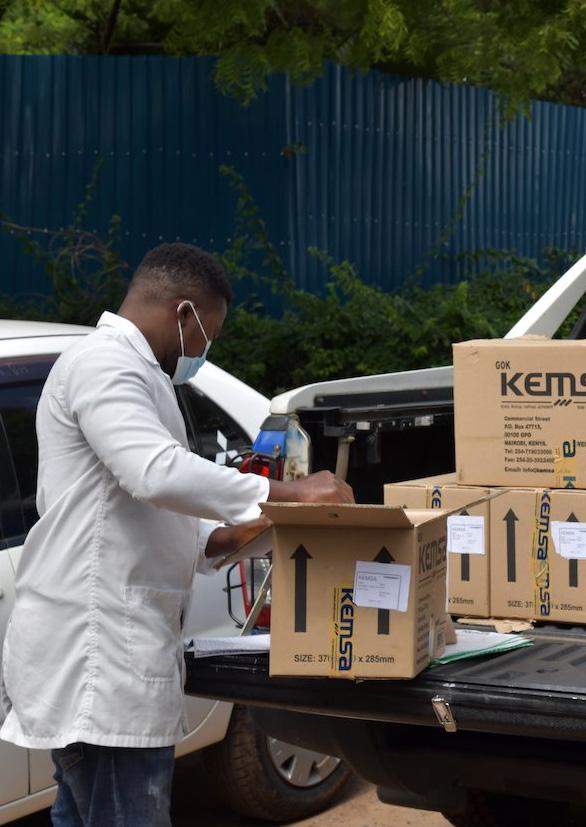

“With the introduction of this new system, we will be able to ensure commodities are delivered in the correct health facilities, in the right quantities, and at the right time.”
As a frontline healthcare worker at Isiolo County Referral Hospital, Denis Mutirithia (pictured on previous page) has a critical role in saving lives—and a new digital tool to help him do so. The pharmaceutical technologist is tasked with predicting and preventing shortages and stockouts of essential medical supplies, including contraceptives.
If he receives stock from the Kenya Medical Supplies Authority (KEMSA) on time, the hospital’s patients will have access to the medicines they need, when they need them. But delayed supplies can unleash a litany of crises, from illness to unintended pregnancies, and higher risk of maternal and newborn deaths.
As the COVID-19 pandemic ravaged health systems and shuttered health facilities, family planning and contraceptives have been among the most extensively disrupted services (bit.ly/36Urbsa). The costs are being borne by the most vulnerable women and girls (bit.ly/3qGgwZm), with spikes in unintended pregnancies reported among adolescent girls in some parts of Kenya.
“When a woman’s reproductive health is stuck, her life is also stuck,” said Editar Ochieng, founder of a women’s shelter and legal aid organisation (bit.ly/3qIKJa8) in Kibera, a sprawling slum in Nairobi. “Access to contraceptives is one of the most crucial empowerment tools that women in Kibera need to improve their lives, but often this is not available.”
Now, a new mobile phone app is set to become a game changer for healthcare workers like Mutirithia. The Electronic Proof of Deliveries, or e-POD app, keeps track of supplies to primary health facilities through the simple touch of a button and was developed to improve essential deliveries across Kenya.
“By checking the app on my phone, I am able to tell when a particular delivery of family planning commodities is expected to arrive. This helps us advise clients accordingly, so that they get their method of choice at their next appointment,” he says.
The e-POD app received an award for best innovative health supply chain solution at the 2021 Global Health Supply Chain Summit in December 2021. So far, it has been rolled out in 10 Kenyan counties in the country—including Nairobi, Isiolo, Kisumu, Homa Bay, Lamu, Kilifi and Kwale—and is expected to be available in all 47 counties by mid-2022.
The mobile app was developed as part of the Last Mile Kenya programme (bit.ly/3tLZfj8), implemented through a partnership between KEMSA and Coca-Cola Beverage Africa, with the support of the United Nations Population Fund (UNFPA). Borrowing from Coca-Cola’s expertise and best practices in supply chain management and distribution, the app digitises data entry at the point of delivery to provide real-time data on the commodities received, their quantities, and time of delivery.
It uses GPS to ensure deliveries arrive where and when they are supposed to, and health facilities can easily report back on whether they received the correct specifications. The app also monitors order turnaround times to prevent delays that could lead to exhausted stocks of life-saving supplies.

Director of Operations at KEMSA, Edward Njoroge, said: “Prompt delivery of commodities and supplies has been one of the significant challenges we have been experiencing as KEMSA. With the introduction of this new system, we will be able to ensure commodities are delivered in the correct health facilities, in the right quantities, and at the right time. This will help us facilitate timely payments to our suppliers, transporters, and timely billing to development partners supporting family planning programmes.”
e-POD is one of two recent family-planning tracking apps developed with support from UNFPA. The second is Qualipharm (bit.ly/3NufMAd), created with local public health organisation HealthStrat, to track consumption of family-planning commodities at county, sub-county and facility level. The app is loaded onto tablets distributed to commodity managers, including pharmacists, and commodity managers at public health facilities who use it to electronically take stock of commodities consumed during the period as well as placing new orders. The adoption and
use of the digitised, mobile-based commodity reporting solutions at the facility level provides an end-to-end visibility of commodities while improving the quality of data reported.
These apps are, says Charity Koronya, of UNFPA, “a game-changer—not only for healthcare staff but also for the citizens who rely on public health facilities to access life-saving commodities. Provision of family planning commodities contributes to the elimination of unintended pregnancies, which eventually leads to reduction of maternal and newborn mortality as well as improving the health and well-being of women and girls.”
The COVID-19 pandemic has affected women’s access to family planning information and services around the world, with some 12 million women (bit.ly/3JR75Oe) experiencing disruptions to family planning services since it started, particularly in low-income countries and marginalised communities.
UNFPA works with local and international partner organisations across Kenya to strengthen efforts to ensure universal access and rights to sexual and reproductive healthcare, reaching more than 900 000 people with family planning services in 2020 (bit.ly/3wLQLL1).
United Nations Population Fund (www.unfpa.org)
The app also monitors order turnaround times to prevent delays that could lead to exhausted stocks of life-saving supplies.









Seeking jobs abroad is not an option for young Nigerians—they do not have the right skills
Without addressing the problems of skills mismatch and the lack of digital skills, young Nigerians will continue to miss out on opportunities in the global labour market.

Nigeria is sitting on a demographic goldmine that could transform the economy. About 60% of Nigeria’s 200 million people are under the age of 25, and that number is expected to increase significantly by 2050 (bit.ly/3tPo0uK).
Instead of being an asset, the country’s burgeoning youth population has become an albatross. It poses risks for the economy and social cohesion.
Among Nigeria’s economic challenges, youth unemployment remains the most formidable. The World Bank estimates (bit.ly/3LpQ5ih) Nigeria’s youth unemployment at 17.7% in 2019 compared with 10.8% for Africa (bit.ly/3DmIYnU). Nigeria’s youth unemployment rate is double the national rate of unemployment (bit.ly/36FL3iT).
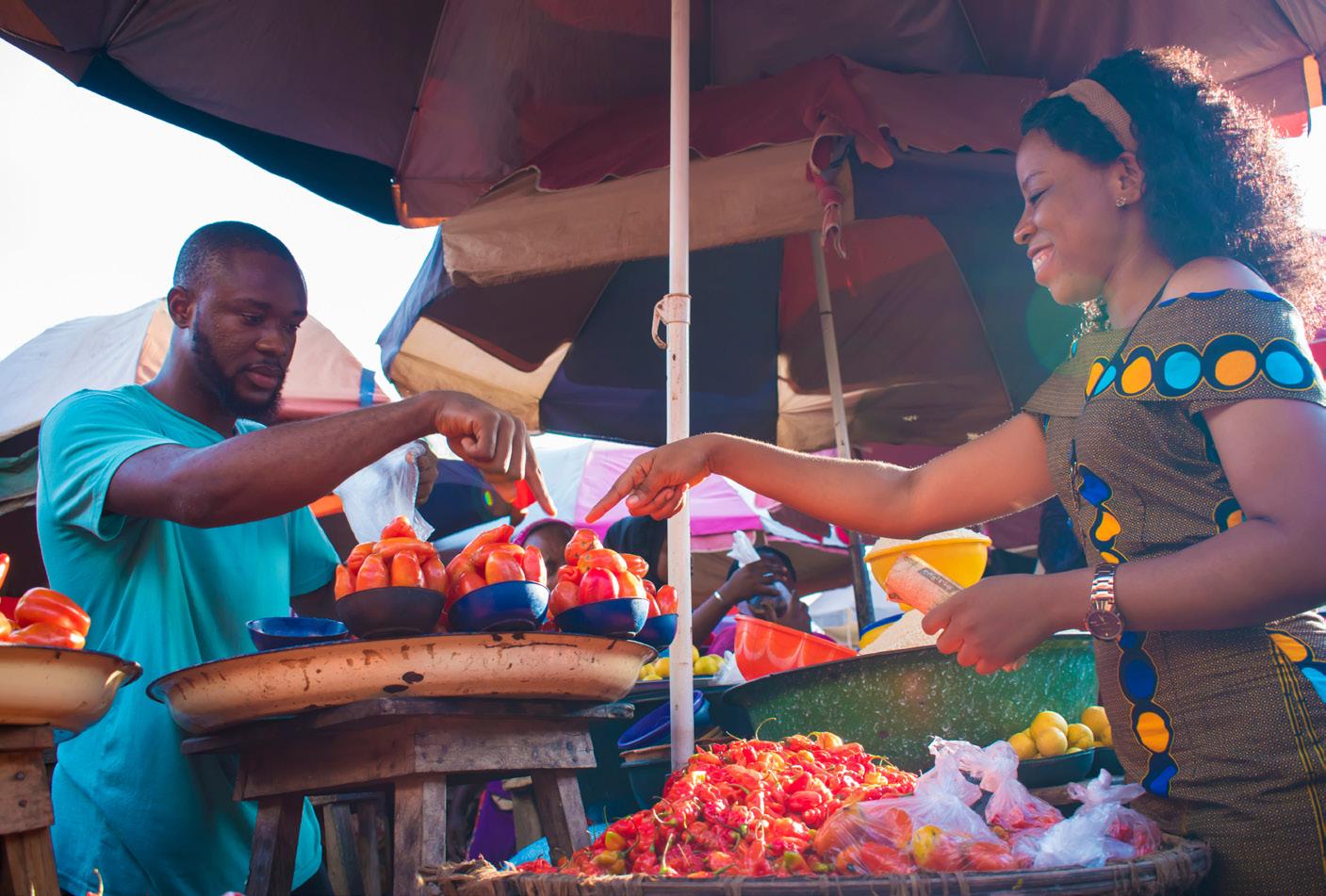
Official statistics on unemployment in Nigeria often underestimate the severity of the problem. For example, they do not account for the fact that over 80% of Nigerians with primary education or more who are regarded as employed are grossly under-employed in low-productivity informal-sector work (bit.ly/3JQRGNW). Activities in this sector typically consist of street hawking, petty trading, tailoring, shoe mending, domestic work, roadside food vending, transportation and subsistence agriculture.
The federal and state governments have introduced various measures to address youth unemployment. These include social investment programmes (bit.ly/3Nvudnv) that encourage youth entrepreneurship and
support for micro, small and medium-sized enterprises. Others are skills development programmes, direct labour for public works projects, loans for agriculture and various initiatives to spur entrepreneurship. Despite all these efforts, 65 million young Nigerians—or one in three—are expected to be unemployed in the next four years (bit.ly/3JQRSg8).
In a recent report (bit.ly/3IUzEsC), the World Bank proposed strategies for addressing youth unemployment in Nigeria.
One is the creation of safe and legal labour migration pathways for young Nigerians to seek job opportunities in other countries. This would be in contrast with the current illegal and perilous migration patterns (bit.ly/3IQQR6p).
The proposals are laudable, as there are acute shortages of skilled workers (bit.ly/3DpPnPb) in some developed countries. The United States (bit.ly/3iNzgBD), Canada (bit.ly/3NJhzld) and the United Kingdom (www.gov.uk/skilled-worker-visa) have introduced special visas for attracting skilled workers from other countries. Workers from Asia, especially India (bit.ly/3Nwn8mI), have benefited from these opportunities.
The World Bank proposes that countries of destination looking to fill labour shortages provide high-quality and industry-relevant training to potential migrants and non-immigrants in Nigeria. This, it argues, would increase the global stock of workers and contribute to a brain gain.
The onus would need to be on the companies. This is because many young Nigerians lack 21st century skills desired by global corporations (bit.ly/3tNYfLy).
This proposal is theoretically sound. But it poses a number of questions.
Innovation and disruptive technologies have become salient components ( bit.ly/3LtmXqi) of industrialised economies. Robotics, 3D printing, precision machining, data analytics, bioinformatics, digital imaging, design and animation all feature prominently. Not many young Nigerian possess these frontier skills.
This lack of skills is not only a Nigerian problem; it is pervasive across Africa. This explains why much of labour migration —about 80%—in Africa is intra-regional, rather than international. It consists mainly of unskilled workers (bit.ly/3wPWtLW).
Global corporations are looking for workers with ‘productive capacities’ (bit.ly/3IVCj5o) that can be used in manufacturing, science and technologyintensive sectors, as well as information technologies.
The World Bank proposal is based on the old paradigm of competition in which labour abundance is a major driver of competitive advantage. But this is no longer the case, as technology, knowledge, innovation and skills have replaced labour as the major pillars of competition. The World Economic Forum suggests (bit.ly/3DmKlTA) 85 million jobs worldwide will be at risk because the current job holders lack relevant skills.
Thus, attempts at addressing youth unemployment in Nigeria should focus on raising the skills and productive capacities of young Nigerians.
In addition to exploring opportunities in the global labour market, the World Bank has suggested the creation of domestic job opportunities. This may be accomplished if Nigeria is able to attract employmentintensive global corporations.
But Nigeria is not very attractive to global value chains and foreign investors. Foreign direct investment in the country has been declining inexorably (bit.ly/3qLyCsK), from 6% of gross domestic product in the mid1990s to about 0.5% in 2019.
Why do global IT and pharmaceutical corporations prefer to locate in India and not in Nigeria? Why does Apple manufacture iPhones and iPads in Taiwan? Why do global textile corporations prefer Vietnam, China and the Philippines? Why has Malaysia, and not Nigeria, become a major hub for solar equipment manufacturing?
The answer is simple: their young people possess a critical mass of the needed scientific and technical skills.
Creating safe and legal pathways for the migration of young Nigerians will only be effective if the following measures are taken:
First, the ongoing de-industrialisation of the Nigerian economy must be reversed. Over the past four decades, there has been a steady decline in manufacturing value added in Nigeria (bit.ly/3tP2vKE): from over 20% of GDP in the early 1980s to less than 10% in 2019.
As a result, many young Nigerians have not had the opportunity to acquire industrial, technological and innovative capacities.
Another effect of de-industrialisation is that it has foreclosed opportunities for students in Nigeria’s tertiary institutions to apply their classroom learning in industrial contexts. In a survey of companies in Nigeria, 81% said they had difficulty finding workers with the relevant skills (bit.ly/3Ls4ivm). It is also a reason why global corporations do not find Nigeria an attractive location.
The World Bank proposes a model in which the private sector and the government in destination countries would provide high-quality and industry-relevant training to potential migrants and non-immigrants within Nigeria.
This proposal is theoretically sound. But it poses a number of questions:
First, how would this training be financed? There may be political resistance by taxpayers in destination countries to finance training programmes that benefit the private sector and foreign countries.
Second, private enterprises are often reluctant to invest in training new workers. Investment in training is costly. In addition, it would be difficult to prevent trained workers from taking newly acquired skills to other enterprises or destination countries that did not incur the training costs.
Third, industrial and technical training is a longterm process, but firms are more interested in short-term returns on investment.
Finally, given the bureaucracy and inefficiency of Nigeria’s public sector, it may be challenging to implement a training partnership between firms in destination countries and the Nigerian government.
The World Bank report also notes that Nigerians with relevant skills have found their
way to the US where they thrive in various fields. This suggests the problem of youth unemployment is more about increasing the number of young Nigerians with 21st century skills, and not just about creating more legal migration routes.
Nigeria’s ‘informal-sector trap’ needs to be addressed before promoting a pathway to jobs abroad. Easy entry into the informal sector disincentivises young people from acquiring high-order skills to enable them to obtain highpaying formal-sector jobs.
Young people are attracted to the informal sector because there are no skills requirements. This can be a blessing and a curse. It is a blessing in that it easily absorbs the teeming population of Nigeria’s unemployed and underemployed young people. But it is a curse because it provides only a temporary succour, and young people are unwittingly discouraged from acquiring skills desired by global corporations.

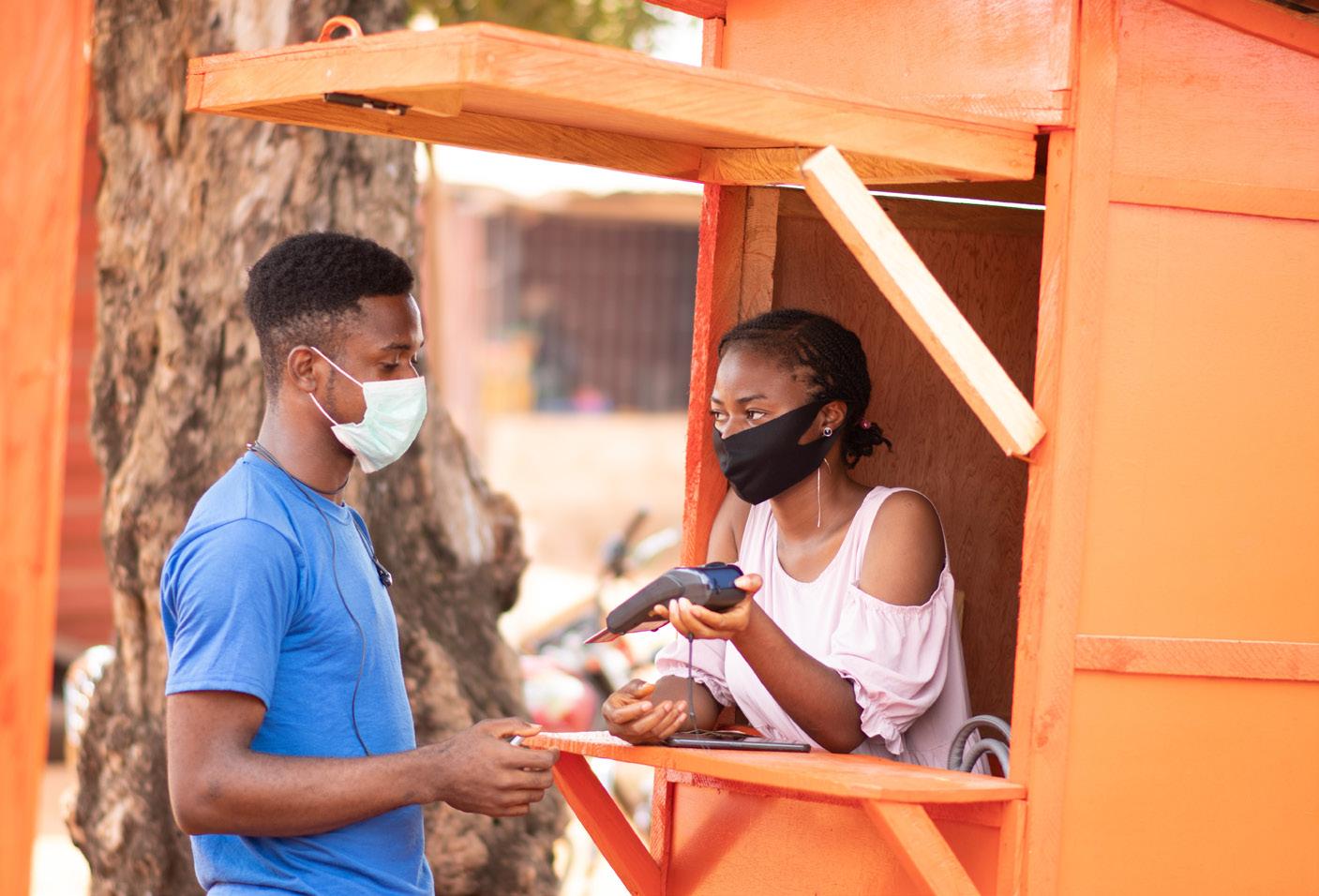
Nigeria’s outdated tertiary educational system should be revamped. Tertiary institutions in Nigeria produce thousands of scientists, engineers and technologists every year, but many (bit.ly/35nkCOx) end up unemployed (bit.ly/3Dobupd). This is because their training and education are not relevant in the contemporary labour market.
Without addressing the problems of skills mismatch and the lack of digital skills, young Nigerians will continue to miss out on opportunities in the global labour market.
Stephen Onyeiwu
Andrew Wells Robertson Professor of Economics Allegheny College
Nigeria’s ‘informal-sector trap’ needs to be addressed before promoting a pathway to jobs abroad.

Universities face many threats to their future. The traditional universities have become over-managed business enterprises (bit.ly/3qzqU53), which may not reflect societal, national or global educational needs. The COVID-19 pandemic has brought many of these issues into focus.
In a new book (bit.ly/36Iq92g), I propose a model that responds to the broad range of
challenges universities face. I call this model the distributed university— that is, a university that distributes education online to where it is needed.
In more than 50 years as an academic in Australia and the United Kingdom, I have seen the potential for a pivot to online learning which, through distributed learning, could solve many of the problems the higher education sector faces.
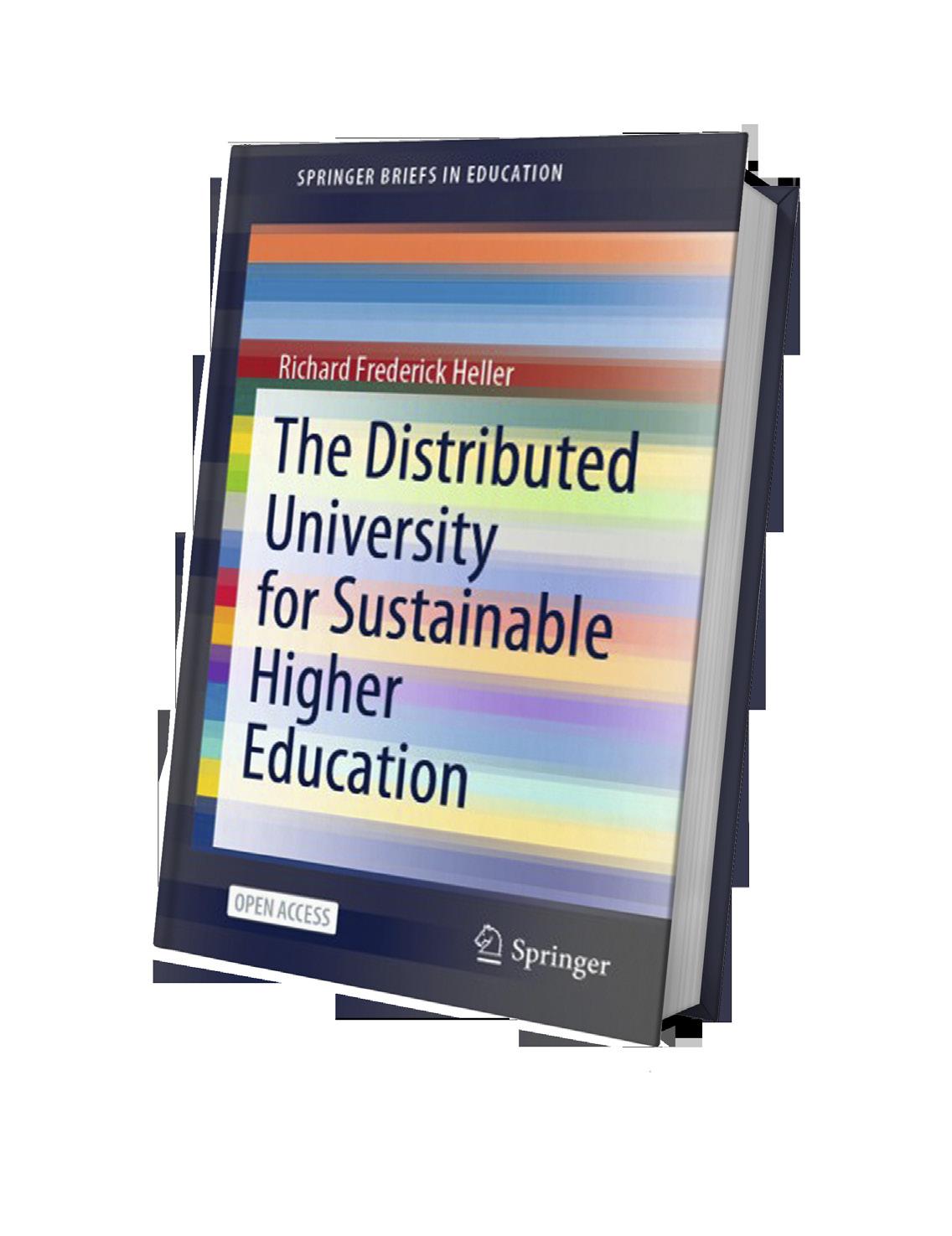

We live in a digital and distributed world. Universities should, too.







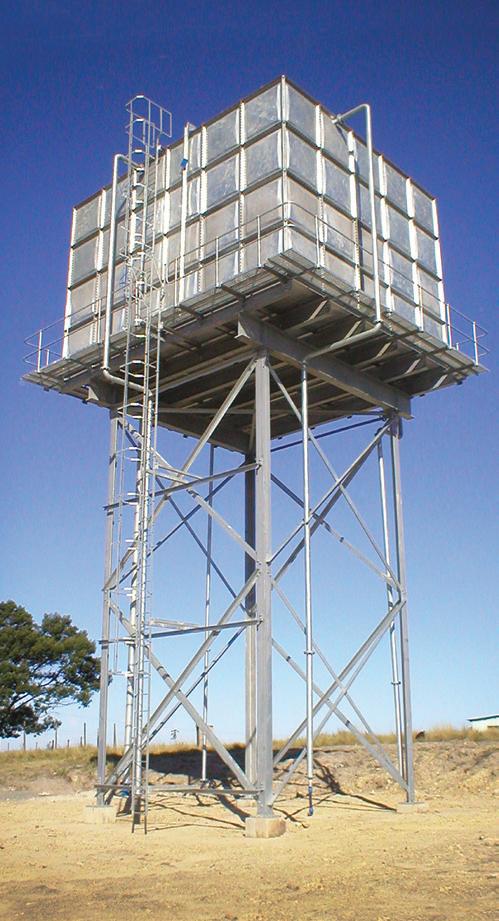
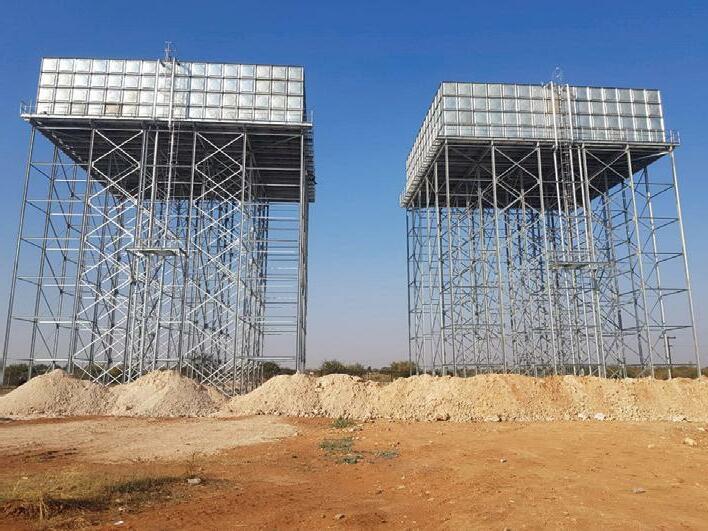


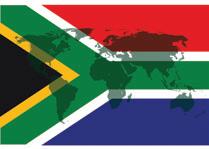
The pressures on universities are both external and internal.
Externally, universities need to be responsive to the ways people access information today (and will tomorrow). They also need to ensure environmental sustainability. And amid global inequalities in access to higher education, our universities are overly dependent on income from overseas students (bit.ly/3NbSdfr).
Internal developments pose multiple threats, too. Universities have downgraded teaching, with academics not rewarded for educational excellence as opposed to research. They have adopted a competitive business model, rather than a collaborative model of education, and intrusive managerial oversight instead of placing trust in academics. And they work in centralised ivory towers rather than engaging with local communities and industries.
The distributed university responds to these problems by:
• reducing global inequalities in access;
• emphasising local relevance;
• reducing impacts on the environment;
• building trust in place of managerialism; and
• collaborating rather than competing.
The distributed university I describe in my book (free to read and download) sets up higher education to adapt to the changes in how we work and learn today.
Online learning, which must be fit for purpose (bit.ly/3wAJLQW), is central to this as it allows for structural change. Smaller local hubs can largely replace central large campuses, reducing the large carbon footprint created by students and staff travelling to campus. These hubs may be physical or virtual.
The distributed university offers education mainly online rather than in lecture halls. Local or regional hubs engage with local communities, industries and other education providers. They encourage practice-based active learning, which can be a hybrid of online and face-to-face.
Each of the hubs can be replicated over geography (including internationally) and over time. Learning needs will change over time as careers and interests develop. Central administration is much smaller, but ensures the courses being offered meet societal needs.
Intrusive managerialism is replaced by trust in academics—made easier by this structure. It is not generally recognised that online education is much more transparent
than face-to-face. All materials, student contact and student–tutor interactions are captured, allowing for unobtrusive quality assurance.
Social interaction between students and between academics is offered partly in the hubs, but mainly online. This reflects the way we communicate and learn in today’s world.
IT support for education and research is vital. It will allow us to respond to future developments in communications and to the changes and challenges of the 4th Industrial Revolution (bit.ly/3NhqyJQ).
The distributed university will be light on the environment. Although online education is IT-heavy and has its own carbon footprint, it’s much smaller (bit.ly/3Iw2AqF)—even more so when powered by renewables—than the face-to-face version with buildings and travel. It will thus show leadership in achieving environmental sustainability.
This model’s local and regional hubs will also encourage regional development.
Our recent research paper (bit.ly/3JCwj2N) highlights the environmental benefits of online education. A group of 128 master’s degree students (mainly from Africa) studied online rather than travel to live and study in the UK. They saved nearly a million kilogrammes of carbon emissions.
COVID has exposed the over-reliance on overseas student fees. This revenue has largely been diverted to support research (bit.ly/3JGwaLM).
In addition to the benefits described above, a pivot to online education opens up
other opportunities. I describe three potential programmes: a global online programme, a tertiary version of the International Baccalaureate, and a “PlanE for Education”.

A global online programme (bit.ly/3IzIpYT) can create low-cost learning for overseas students. This will help meet current educational needs while providing a bridge to future mutually beneficial partnerships with emerging economies. Research must be properly funded, and not rely on the diversion of income from overseas students paying high fees.
To help reduce the destructive emphasis on competition between universities (bit.ly/3uqtgnH), a higher education version of the International Baccalaureate used in schools may be created. This would involve global collaboration between universities, which would reduce competition and standardise quality.
Continuing the collaboration theme is a proposal to create “PlanE for Education” (bit.ly/36uBiUC). This would be similar to initiatives such as PlanS ( bit.ly/36L9lYI), which require publicly funded research to be published in open-access journals or platforms. At least some of the educational resources generated in universities using public money would be made freely available under PlanE.
We live in a digital and distributed world. Universities should, too. The notion of a distributed university may help the higher education sector survive, prosper and be sustainable.
Richard F. Heller Founder and co-ordinator Peoples-uni (peoples-uni.org)
Externally, universities need to be responsive to the ways people access information today (and will tomorrow).
South Africa is in the process of rebuilding after the damage sustained as a result of riots and the coronavirus pandemic, while the threat of climate change continues to loom large. The focus of this
year’s conference is the way we rebuild. The right way to do this is through energy ef ciency (EE). EE projects are sustainable, stimulate an economy and offer cost savings. This conference aims to guide individuals and companies alike through conversations that can accelerate the rebuilding of our nation by embracing energy ef ciency.
In an ever-changing world, energy consumers at all levels need to be self-suf cient to insulate themselves against the uncertainties around them.
All energy sources are included with a focus on the bene ts!
The SAEEC Conference runs from 28 to 30 September 2022 and we are offering two pre-conference training sessions from 26 to 27 September 2022:
The SAEEC 2022 Conference is a complete package of knowledge-sharing and business development ideas, the bene ts include:
1. Topics of great relevance relating to energy and water ef ciency and climate change in South Africa.
2. Government speakers who can provide insight into government policy developments towards energy and water ef ciency and a just transition.
3. World-class speakers, who are energy and water ef ciency specialists, discussing topical issues.
4. Finance specialists to address your questions and give you answers about nancial packages available for funding energy projects.
5. The importance of measurement and veri cation.
6. Information on carbon tax – mitigation and adaptation.
7. Opportunities to network and develop your business at an in-person event.
8. Opportunity to attend the two pre-conference sessions and educate yourself further.
9. Earn two AEE renewal credits if you attend the three-day event.
10. Earn two CPD credits for attending the three-day event.
11. Have your technical paper published in the GO2Energy Digital Connect Technical Journal.

12. Have an exhibition stand to attract and promote business for your company.
WHO SHOULD attend the conference
• Building owners and managers
• Energy engineers and managers
• Water engineers
• Emissions managers
• Certi ed energy managers
• Certi ed building commissioning professionals
• Facility managers
• Accountants and CFOs in the energy industry
• Business energy professionals
• Plant engineers and managers
• Industrial/commercial/institutional purchasing agents

• Government facility managers and engineers
• Corporate directors
• Energy project developers
• Energy service professionals
• Utility professionals
• Energy procurement professionals
• Electrical and mechanical engineers
• Facility and maintenance engineers
• Electrical/mechanical contractors
• Commercial/industrial developers
• Architects, designers and consultants.
All submissions are welcomed and will be peer-reviewed. Technical papers may be published. Our Conference Tracks include, but are not limited to, the below.
• Measurement and veri cation;
• All about carbon;
• Sustainable generation;
• Energy nexus links;
• Energy ef ciency in industry and Industry 4.0;

• Energy management and resources; and
• Energy ef ciency in buildings and lighting.
The SAEEC board cordially invites you to consider participating in the forthcoming 2022 SAEEC Conference, 28 to 30 September 2022 in Johannesburg. The 2022 SAEEC offers numerous opportunities to enhance your prominence and visibility to decision-makers in the industry with business-to-business meeting opportunities for delegates.


Sponsorship opportunities include track branding, breakaway session branding, programme branding and event marketing exposure, speaker slots, website exposure, training sponsorship and advertising space in the GO2Energy Digital Connect platform. Conference participation includes:
• Delegate/attendee;
• Conference co-host;
• Track sponsorship;
• Exhibitor;
• Pre-conference training sponsorship; and • Gift sponsorship.
• South African Institute of Electrical Engineers (SAIEE);

• The Institute of Energy Professionals Africa (IEPA;

Energy & Water Sector Education Training Authority (EWSETA);
Energy Services Companies Association of South Africa (EASA);


South African Females in Energy Ef ciency (SAFEE);
Association of Energy Engineers (AEE)
South African National Energy; Development Institute (SANEDI); and
Illumination Engineering Society of South Africa (IESSA).
The Global Gateway Africa–Europe investment initiative will allow the EU to support projects in priority areas on the continent, with a focus on the green transition

In March this year, the European Commission announced investment funding for Africa worth EUR150 billion as part of the European Union’s Global Gateway Africa–Europe Investment Package. This funding is said to be in the form of EU combined member funds, member state investments and capital from investment banks.
Michael Foundethakis, Baker McKenzie’s global head of Project and Trade & Export Finance, and Africa Steering Committee chair, explains that the scheme is seen as a way for the EU to build influence around the world, and is considered by some to be a counter to China’s Bridge and Road Initiative that began in 2013.
“It is also intended to boost post-pandemic growth in regions that were badly economically impacted by the pandemic—although the current conflict in the Ukraine could, of course, affect or change the dynamics and/or timing of these proposals,” he notes.
Foundethakis says the Global Gateway Africa–Europe Investment Package will allow the EU to support projects in priority areas on the continent, with a focus on the green transition, sustainable growth and job creation. As part of this initiative, the commission announced it would invest EUR1.6 billion to support Morocco’s energy and digital transition projects.
European Commission president Ursula von der Leyen recently noted that investment in Africa should not come at a heavy cost— financially, politically, environmentally and socially—and that the Global Gateway scheme would focus on investments that were grounded in transparency, good governance and with concern for the environment and the well-being of the population.
Foundethakis agrees, noting that “there are considerable opportunities across Africa’s different regions and countries, but not without responsibility. As well as being bankable and yielding attractive returns, it is becoming increasingly imperative that investment in Africa should be sustainable and provide ancillary benefits to local economies. Simply put, it should be net-positive for the region”.
Foundethakis notes further that Africa needs strong partnerships to address its development challenges and to ensure it is able to take full advantage of the African Continental Free Trade Area (AfCFTA): a continent-wide free trade zone launched in January 2021.
“For free trade across the continent to be successful, infrastructure is urgently needed to facilitate the movement of goods and services across Africa’s borders. There is therefore an urgent imperative to address the infrastructure funding gaps in transportation, energy provision, Internet access and data services, education and healthcare projects in Africa,” Foundethakis explains.
To aid Africa with its massive infrastructure needs, China has provided significant capital for key infrastructure projects in Africa in the last few years. Baker McKenzie’s report with IJ Global—“New Dynamics: Shifting Patterns in Africa’s Infrastructure Funding” (bit.ly/3KDjXHP)—shows that lending by Chinese banks into energy and infrastructure projects in sub-Saharan Africa saw a small uplift in 2020, despite the pandemic, although deal values were well below their 2017 peak. In 2017, Chinese banks lent US$11 billion to African infrastructure projects, which decreased to US$4.5 billion in 2018, US$2.8 billion in 2019 and US$3.3 billion in 2020. Overall, the figures reveal there has been a slowdown in the number of infrastructure deals backed by Chinese investors, although they are still the biggest investors in the region. In the short term, the report notes that more targeted lending from China is expected.
with Africa post-Brexit. Further to key summits in 2020 and 2021, finance is being redirected into Africa from the UK.
Europe’s strong ties with Africa are not new. According to the European Commission (bit.ly/3MDFMbM), the EU, its member states and the European development finance institutions—together known as Team Europe —are Africa’s top partners. In 2018, the EU had around EUR239 billion in foreign direct investment stock in Africa.
Team Europe is also the largest provider of official development assistance (ODA) in Africa. In 2018 to 2019, it provided EUR17 billion of ODA to the African private sector and EUR5 billion to large infrastructure projects. In the same timeframe, the European Fund for Sustainable Development leveraged more than EUR24 billion in private funds, and the European public development banks jointly invested more than EUR30 billion on the African continent.
One of the aims of Team Europe is to assist the continent with its pandemic recovery by investing in resilient healthcare systems and local vaccine production.
“In early 2020, the European Commission published its ‘Comprehensive Strategy with Africa’, outlining the region’s plans for its new, stronger relationship with the continent. The strategy document laid out five top priorities for the EU in Africa: the green transition and improving access to energy; digital transformation; sustainable growth and jobs; peace and governance; and migration and mobility.”
“The United States has also renewed its focus on impact-building and financing strategic longterm projects in Africa, with the Export-Import Bank of the United States (EXIM) supporting infrastructure development on the continent,” says Foundethakis. “Last year, the US announced a renewed Prosper Africa initiative, which focuses on improving reciprocal trade and investment between the two regions.
“The US is also a major player in funding African infrastructure projects. For example, according to the infrastructure report, two US development agencies—EXIM and the Overseas Private Investment Corporation—funded infrastructure projects to the value of US$4.7 billion and US$3.6 billion respectively, between 2008 and 2020.”

The United Kingdom is also making a strong play for influence, investment and trade
Foundethakis adds that African Union (AU) member nations have noted that their primary needs included support in terms of safety and security on the continent, as well as help in implementing the AfCFTA, and the massive infrastructure investment it needs to be successful.
In 2020, then AU chair Cyril Ramaphosa said in his inaugural speech that the AU needed “African solutions to African problems”, setting the tone for a deepening relationship with Europe that was balanced and to the benefit of all. The commission acknowledged Ramaphosa’s comments, saying Africa wants to take its future into its own hands and that Europe needs a strong Africa.
Angela Matthewson Independent contractor: Communications Baker & McKenzie“It is intended to boost post-pandemic growth in regions that were badly economically impacted by the pandemic”

batteries to provide continuous power when the sun isn’t shining or the wind isn’t blowing. The batteries REVOV supplies to the renewable and uninterrupted power supply sectors in SubSaharan Africa are repurposed from the cells of electric vehicle (EV) batteries.
Lance Dickerson, MD at REVOVRenewable energy is the future worldwide and most certainly in South Africa, which is navigating an unprecedented power supply crisis.
Energy that is harvested from the sun or wind needs to be stored in appropriate
Why does this matter? Lithium iron phosphate batteries are superior to leadacid batteries in every metric, from safety to performance. New lithium iron phosphate batteries rely on an already stretched lithium supply chain. 2nd LiFe batteries, which are repurposed from the cells in replaced EV batteries, have stepped up to fill the void caused by pricing pressure in the first life market. Every EV’s battery needs to be replaced when the weight no longer justifies the performance. Ordinarily these batteries would
when repurposed correctly and when built into batteries with intelligent management systems, still have enough life and performance in them to provide stationary storage for as long as first life batteries, with the added benefit of performance specifications unique to the EV sector, such as the capacity to perform in harsh conditions.

This is how REVOV has built its business. By securing these premium cells and by building premium 2nd LiFe batteries, we’ve provided a compelling solution to close the circular economy in sub-Saharan Africa and we predict that 2nd LiFe will become the dominant battery type providing energy backup to renewable energy installations and UPS systems in Sub-Saharan Africa.

Repurposing of EV battery cells into 2nd LiFe storage batteries set to become vital cog in circular economy
REVOV’s pre-assembled, self-contained High Voltage batteries are affordable, providing the lowest cost per usable kWh. Compatible with Atess HPS inverters and others.


South Africa should design economic policy based on strengths of regions: here’s how
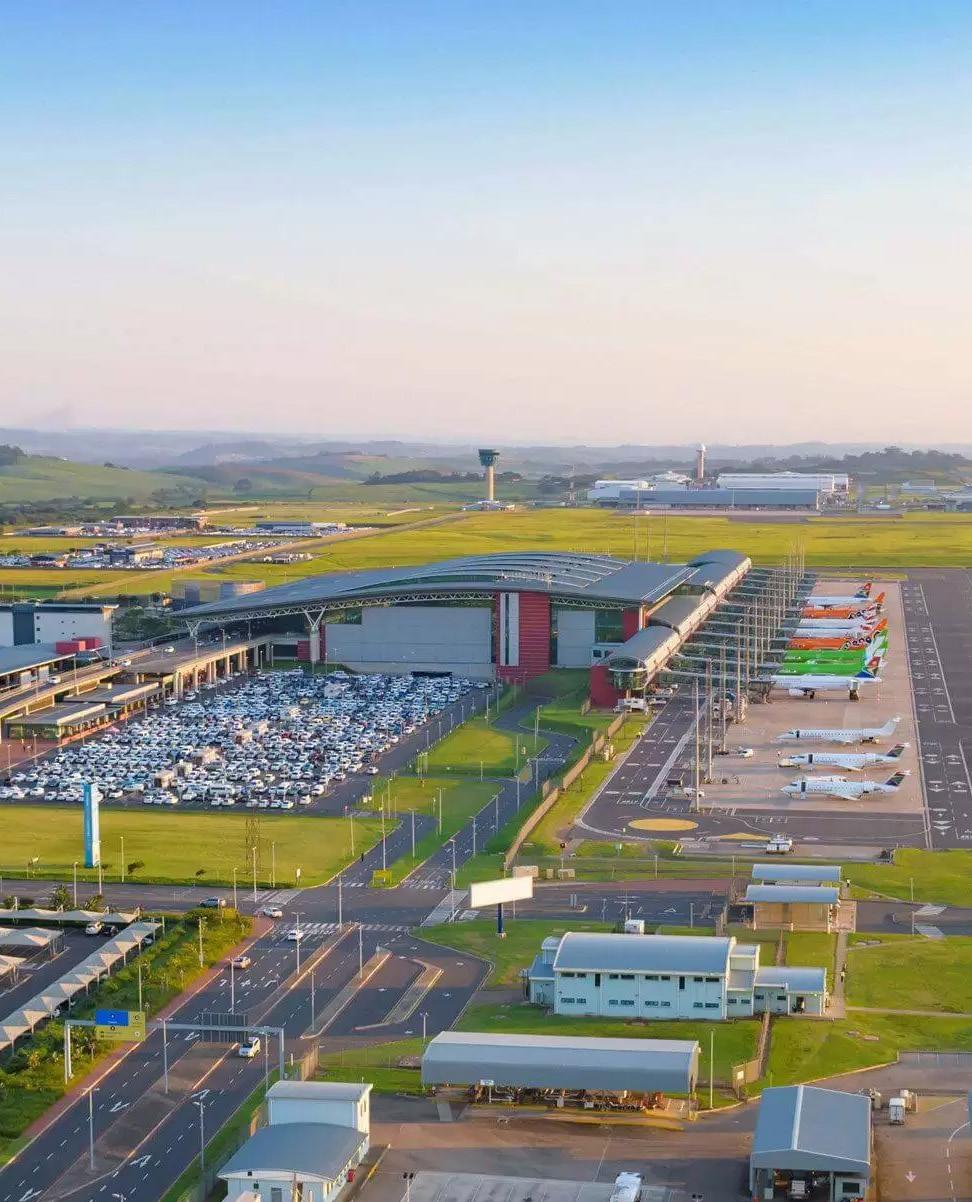
Economists and policymakers seem to have a blindspot when thinking about how the economy functions and what determines success. Analytical frameworks and government policies consistently neglect the role of space and geography in favour of national averages and sectoral plans. Yet, growing evidence from around the world shows the importance of place and location for productivity, growth and development.
Intuitively, it is obvious that economic progress depends on the quality of local skills, capable public institutions, reliable infrastructure, and proximity to markets and suppliers. But just how important are these factors compared with the particular mix of local industries and macro-economic conditions?
In a recent paper (bit.ly/3wzgjLk), we unpacked the economic performance of different provinces in South Africa to diagnose the significance of local factors and sectoral conditions. This is helpful in understanding why some provinces consistently outperform others. And what may be done to help lagging regions improve their competitiveness.
The starting point is to recognise the systemic differences in the size and performance of South Africa’s nine provinces:
Production is highly uneven across the country. The province of Gauteng generates a third of national gross domestic product— more than double the output of the next province—but with less than 1.5% of the land. According to the South African Revenue Service, individual taxpayers from Gauteng contribute 47% of the national total for this revenue source (bit.ly/3JF22jH). Yet, they only constitute 25.8% of the country’s population.
Some provinces are more productive than others. The Gauteng and Western Cape economies expanded at an average rate of almost 3% per annum between 1995 and 2018. This was a third faster than the rest of the country.
There is growing divergence between the largest and smallest provinces. Over the last two decades, the share of national GDP in the three largest economies (Gauteng, KwaZuluNatal and the Western Cape) increased, while
the share in the three smallest (North West, Free State and Northern Cape) contracted. Spatial inequalities have been further amplified by the COVID-19 pandemic (bit.ly/36GhZri).

What lies behind the growing divergence between the best and worst performing regions? And what underpins the continuing growth and prosperity of Gauteng?
The performance of provinces is often attributed to their industrial structure: the problem with lagging regions is said to be their dependence on lagging sectors. Hence, the challenge for provinces such as Mpumalanga and the North West is their reliance on mining and related heavy industries because of rising energy costs and volatile commodity prices.
The usual policy prescription is to find the means to diversify and industrialise. Yet, industrialisation is unrealistic for many small towns. Bigger agglomerations have many advantages that make them more likely to benefit from spatially blind national industrial policies. The unique strengths and limitations of each local ecosystem need to be carefully considered as opposed to generic plans that gain little local traction.
There are several reasons that economies develop unevenly between places, including:
• The industrial structure and whether it is dominated by relatively dynamic or stagnant clusters of firms and their suppliers;
• Natural resource endowments, including mineral reserves, soil quality and rainfall;
• The quality of physical infrastructure such as road, rail and harbours, as well as public utilities and municipal services;
• The skills and capabilities of the local workforce, including basic education and tertiary institutions; and
• The quality of local institutions, including municipal leadership and technical competence. Also the efficacy of community-based organisations, business councils, industry associations and trade unions.
These differences can be important, especially as the effects are cumulative and mutually reinforcing over time. There are potent implications for policy from this thinking. Here are some examples:
Disaggregate variables associated with national conditions from the distinctive circumstances prevailing within each region
To accelerate growth within the Eastern Cape, would it be best to incentivise key industries, such as the automotive sector? Or would public resources be better spent on improving the operating environment for a variety of businesses, such as through upgrading the infrastructure?
A third possibility could be to boost the quality and supply of particular skills that are in high demand by local firms.
It is difficult for policymakers to disentangle the multiple factors and forces underpinning regional growth and to pinpoint those with most potential to accelerate development. A sensible place to start is to disaggregate variables associated with national conditions from the distinctive circumstances prevailing within each region.
Shift-share analysis (bit.ly/3urW1AD) is a common technique for this purpose. This separates out the change in output for a region into three main components:

• Growth arising from national industry trends (known as the industry-mix effect);
• Growth arising from cross-cutting productivity (known as the region effect); and
• Growth related to industry-specific locational advantages (known as the industry-place interaction effect).
The graph illustrates the results of a shift-share analysis between 1995 and 2018 for Gauteng and the Eastern Cape as a leading and lagging province respectively.
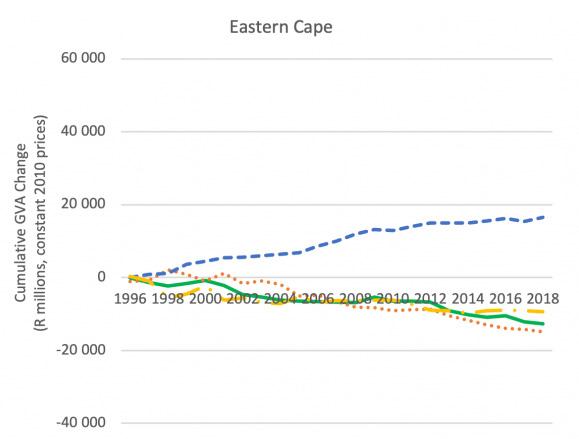
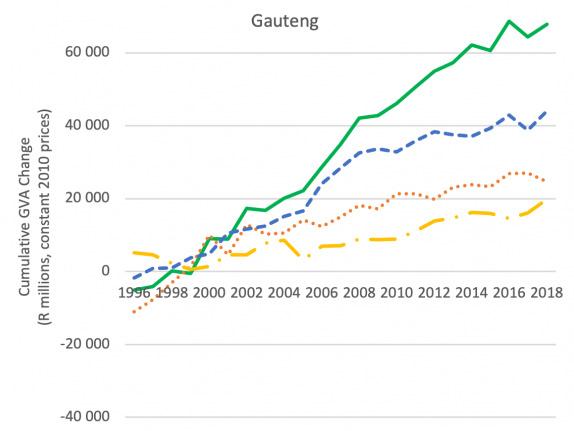
Our results demonstrate that national industry trends explain not more than half of the growth performance of provinces.
For instance, in Gauteng, a favourable industry-mix worked together with positive place-based factors to give it a significant growth advantage compared to the rest of the country. By contrast, the Eastern Cape was hamstrung by poor local productivity despite an advantageous industry composition. The Free State had the worst of both industry and regional factors and so was at a significant disadvantage.
In every case, regional factors were fundamental in explaining provincial economic outcomes.
It is vital that national growth plans pay careful attention to the unique features of each region if they are to succeed. One implication for policymakers is that targeting growth sectors cannot be the sole focus of industrial policy.
The findings call for more detailed analysis of the core features of each province to help them navigate structural change. This includes the performance of the metro economies. A more devolved approach to national economic policy could build on the strengths of every region.
The national economy is hamstrung if only some regions manage to grow.
This article was first published by Econ3x3 under the heading, “Place matters: National prosperity depends on every region performing better” (www.econ3x3.org/node/470).
Justin Visagie Senior Research Specialist
Ivan Turok Distinguished Research Fellow
One implication for policymakers is that targeting growth sectors cannot be the sole focus of industrial policy.













is MORE than just a designation…



You don’t have to take our word for it.
SAIPA has spent 40 years demonstrating a solid commitment to upholding excellence, integrity, and ethics.

Join us on our journey as we focus on the next 4 decades as a trusted Accountancy and Business Advisory Institute for inclusive prosperity.

Uganda takes another step on the e-payments path: 5 things you should know
Long periods of limited physical contact under COVID-19 lockdowns triggered new interest in alternative payment methods beyond existing options. The Bank of Uganda is among institutions that have taken steps to promote a shift toward a cashless economy. It recently ordered commercial banks to reduce by 50% the maximum amount customers can transact by cheque—from an upper limit of US$5 500 to US$2 750—starting on 15 January 2022. This move reflects a slow-rolling process across East Africa toward electronic payments.
Mercy Muendo has studied information technology and law. We asked her to unpack five key points in the Bank of Uganda’s move.
These are electronic payments for transactions made on the Internet. From a legal standpoint, it is any form of payment made on the Internet and conveyed via the Internet.
With the advent of COVID-19 and ensuing restrictions on physical contacts, e-payments have been widely embraced. This has become a key catalyst in the ongoing shift toward a ‘cashless society’—a state when the economy no longer relies on notes and coins.
Traditional electronic payments entail the use of cards, real-time gross settlement system and electronic funds transfer (EFT). These require linking of transactions to physical bank accounts. Modern forms of e-payment include mobile money, and use of third-party platforms.
Thanks to the invention of mobile money, many people have embraced e-payments. Third-party platforms such as Pesapal, PayPal and Stripe have also offered people an alternative to the use of debit or credit cards.

A study (stanford.io/3ixqGXD) revealed that, by 2018, only 28% of Ugandans had bank accounts. The rest were literally unbanked (bit.ly/3L8HKiX) and dependent on cash and barter. This had made transition away from cash much harder.
In 2020, Uganda passed the National Payments Systems Act (bit.ly/3qtFISM) that governs electronic payment services. The act seeks to safeguard consumers from harm that may arise from the use of e-payment platforms.
It requires all electronic service providers to apply for licences, and have a physical trust account or minimum account balance.
It also provides for regulatory sandbox framework for new entrants into the industry. A sandbox is a temporary licence that allows a new entrant to test innovative payment before meeting all the market operation requirements. If the central bank feels the product is harmful to the public, it can revoke such a licence.
It’s still too early to say what effect the law has had.
In December 2020, the Ugandan mobile market reached US$46 billion (bwnews.pr/3IzlywH). The Bank of Uganda data (bit.ly/3JDCVhi) indicates commercial banks accounted for 58% of the mobile transactions (USh93 trillion or US$26.7 billion), a growth from zero in 2010 and US$12.5 billion (USh43 trillion) in 2016.
This is a clear indication that the segment is fast expanding in the economy.
In neighbouring Kenya, the transition away from cash is well advanced. The country is the e-payment revolution leader in East Africa. Official data (bit.ly/3wDfcKm) shows a heavy reliance on mobile money during the COVID-19 lockdown. Total mobile money payments (transfers and e-commerce) almost tripled—from US$5.1 billion (Ksh5.1 trillion) in 2016 to US$14.6 billion in 2020.
Central banks have the role of maintaining trust in the financial sector, overseeing transactions and curbing crimes such as money laundering. E-payments make it easy for banks to keep a trail of transactions. Cash transactions traditionally involve a lot of paperwork, and have to be verified through a number of entry documents.
For e-payments, the transactions are recorded in real time. One can also trace them via data interchange, commonly known as the mobile money or bank money transfer.
Another driver is financial inclusion. This means mass access to affordable products for transactions, payments, savings, credit and insurance. According to the World Bank Group (bit.ly/3JCrdUd), e-platforms have the potential to lower costs by maximising economies of scale. This increases speed, security and transparency of transactions. It also allows for evolution of tailored financial services that serve the poor.
In Kenya, a Central Bank report (bit.ly/3D4UVyF) shows that access to formal financial services and products expanded, from 26.7% in 2006 to 82.9% 2019. That growth was mainly due to innovations like mobile money and mobile banking, states the report. It adds that access to formal financial services went
up to 83.7% in 2021 “as a result of the effects of the evolving COVID-19 pandemic”.
Banks are also increasingly (bit.ly/3JHh74k) turning to electronic platforms as a cost-cutting measure. Costs such as staffing, maintaining ATMs and security that go with physical branching are avoided.
The quest for e-payments—and a cashless society—has gained momentum in Africa (bit.ly/3JDJGja). A number of countries have introduced policies that discourage cash transactions and drafted regulations that protect e-platform users from overcharge, fraud and cyberattacks.
Rwanda has a national payment system strategy (bit.ly/3izVSpk) that seeks to achieve a cashless economy by 2024. I would say Rwanda is on the right track after it brought the private sector on board. The value of Rwanda’s mobile payments (bit.ly/3IF55qK) grew nearly sevenfold—from US$1.78 billion (FRw1.8 trillion) in 2018, to US$7.085 billion (FRw7.1 trillion) in 2020.
Elsewhere, South Africa has already banned cheques (bit.ly/3Lc603H), and has a policy (bit.ly/3qvIiHC) to guide its steps to becoming a cashless society by 2030.
The shift to e-payment platforms comes with a whole network of intermediaries that act as facilitators of transactions. These parties rely on embedded chips, magnetic stripes and touchpads, which are vulnerable to hacking and other forms of cyberattacks.

The involvement of many intermediaries also exposes users to crimes such as fraud and money laundering, especially where the market is not regulated properly.
For instance, Interpol Uganda (bit. ly/356qNpY) reported that USh14.4bn was lost in the year ending 31 December 2021, due to cyberattacks. Most of these were insider attacks, arising from hacking and siphoning of mobile money from double SIM cards. These are classified as insider attacks because they normally originate from the phone SIM card industry.
To mitigate risks, governments need to:
• regulate the issuance of SIM cards and mobile money accounts;
• take an active role in determining unaccounted for accounts and finances;
• apply preventive and proactive measures to curb risks;
• use directives and regulations to reduce the likelihood of risks arising from new finance technologies;
• introduce diverse enforcement measures that are proportionate to the risks, but fostering growth at the same time;
• enforce know-your-customer-better requirements; and
• adopt international financial standards that incorporate cybersecurity best standards.
Thanks to the invention of mobile money, many people have embraced e-payments.

As governments try to navigate a path to a safe climate in the 21st century, the public debate has focused on net zero, carbon taxes, electrification and renewable energy. Mining is rarely an anchor point of the discussion, even though renewable energy infrastructure and lowcarbon technology require vast amounts of metals and minerals.
Nickel, for example, is essential for electric vehicles and battery storage. The amount of nickel required by 2040 for the energy transition alone will be equal to the total demand for nickel across all industries in 2020, according to the International Energy Agency (bit.ly/3wGxYR5).

There is widespread consensus among economists that carbon taxation is one of the most effective policies to reduce carbon emissions (bit.ly/3NpwIbc). Presently, 27 countries (bit.ly/37PIUkW) have enacted carbon taxation policy at the national level, yet only seven are leading mining countries (bit.ly/3Nl3nOZ)—and mining companies and industry organisations oppose carbon taxes in many of these countries.
Addressing climate change requires a coalition between industry and government. The idea that the industry supplying the technology for renewable energy is also opposing the economic policy needed to curb emissions is counter-productive.
Simple economic modelling proves that resisting a carbon tax is the wrong strategy for the industry. Our recent paper (go.nature.com/3iBDSL8) shows the mining industry has an economic incentive to support a tax on carbon dioxide emissions.
The mining industry has historically opposed taxes, especially carbon taxes. When Australia introduced a price on carbon emissions in 2011 ( bit.ly/3IFrKDe), the Minerals Council of Australia led a multimillion-dollar campaign against the carbon tax policy (bit.ly/3L9bSdY), even though there are tax-relief provisions for emissions-intensive industries such as steel and coal (bit.ly/3IDGWkC).
The Australian carbon tax policy was repealed in 2014 (bit.ly/3IE5MAK), but some mining groups do support carbon taxes.
BHP Billiton Ltd supported carbon pricing in 2017 and distanced itself from the Minerals Council of Australia (bit.ly/3NeCBaS).
This fractured industry standpoint on carbon pricing is also present in Canada. Some mining companies have made public commitments to carbon neutrality by 2050 (reut.rs/3urjge6), yet there has been opposition from some industry groups at the provincial level.
Projected demand change for copper and nickel requirements for energy transition technology. The solid bars show the amount of metal demand projected for the energy transition, while the transparent bar shows the actual total demand for copper and nickel across all industries in 2020. (Source: Cox et al. 2022)
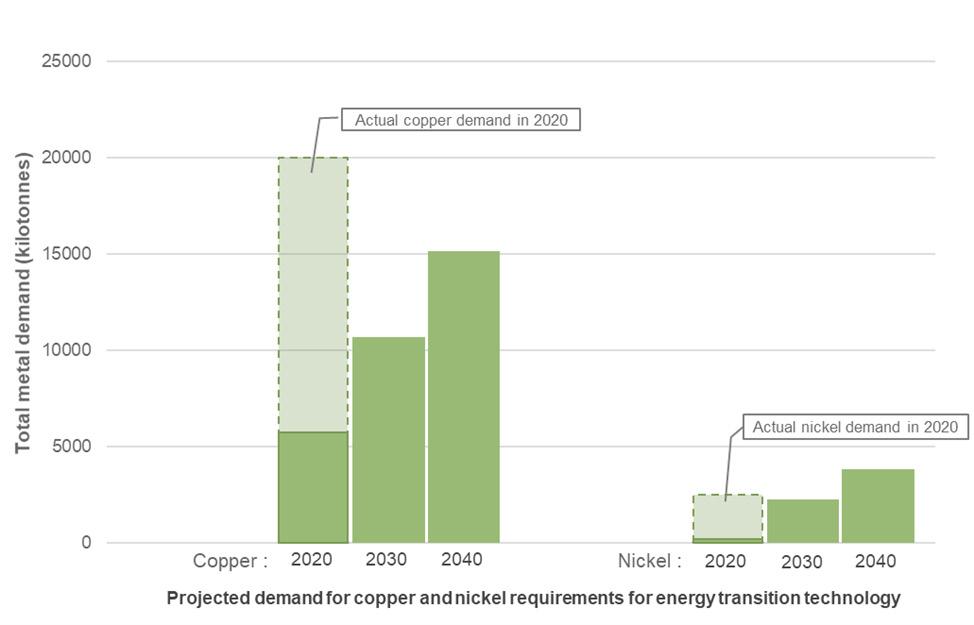
There are many factors throughout the mining process that contribute to carbon emissions. The commodity being mined heavily influences the amount of emissions and where the emissions are generated throughout the mining process.
For iron and steel, most emissions are generated in the later stages during smelting (bit.ly/3Dam7fi). Mining copper ore, on the other hand, generates most of its emissions in the earlier stages during the crushing, grinding and hauling of ore (bit.ly/3wAv1Bs).
One way to look at the impacts of carbon taxation in mining is to compare the commodity’s carbon footprint to its economic value. For example, the average carbon footprint of copper is 3.83 tonnes of carbon dioxide per tonne of copper (bit.ly/3NoRRSz).
So, for each tonne of carbon dioxide emitted, 261 kilogrammes of copper worth US$1 700—using 2019 copper prices—are produced. This is a relatively high value. The same cannot be said for other industries, like animal agriculture, where a tonne of carbon emissions corresponds to about US$125 of wholesale beef (using equivalent 2019 pricing).
The basics of a carbon tax are that more carbon-intensive industries will be taxed more. Our study tested three levels of carbon taxation: US$30, US$70 and US$150 per tonne of carbon dioxide, and compared them against commodity prices in 2019. These levels closely follow the Pan-Canadian approach to carbon pollution pricing (bit.ly/3JHoJnk), which is currently set to $50 per tonne and increases $15 per year to $170 in 2030.
We modelled the impact of a carbon tax on a range of commodities. Our model included all Scope 1 and Scope 2 emissions (bit.ly/3iBuffm): direct emissions from the source and indirect emissions associated with heating, cooling or electricity. The production of some commodities is more carbon-intense than others, which affects the impact of the carbon price.
In some cases, the carbon tax can be greater than the product’s value. When the price of carbon is US$150, coal is taxed at 144% of its value. Copper, on the other hand, is taxed at 10% of its value.

The impact of three levels of carbon taxation (US$30, $70 and $150) modelled as a percentage of present product value for selected commodities. This shows that most mining industry and energy transition commodities will not be taxed to the same degree as other commodities. (Source: Authors)

Two metals are outliers to the industry: aluminum and steel. The mining of the raw materials is not carbon-intensive. Bauxite and iron ore generate 0.005 and 0.02 tonnes of carbon dioxide per tonne of product respectively, but smelting these ores into metals emits more carbon in production.
Outside of aluminum refining and steel mills, the mining industry will perform better with a carbon tax than it would without one. This is because the carbon tax would increase the price of fossil fuels relative to renewable energy and the materials required for renewable energy technology.
For example, the costs of coal used for energy production will more than double, making electricity from coal increasingly uncompetitive. The rising demand for solar and wind power will drive further increases in the consumption of base metals for wind turbines and solar panels.
If implemented on a global scale, a carbon tax would not change the underlying cost of the base metal business, but it does have vast financial benefits for the mining sector. These benefits come from the increased demand for metals from the energy transition, paired with a relatively lighter percentage of global carbon taxes, in comparison to other industries.
Rather than opposing carbon taxes, the mining sector should become a global advocate for aggressive carbon targets and the harmonisation of international carbon taxes, and pursue further reductions to emissions such as the electrification of fleets (bit.ly/3D93jNq) or carbon offsets (bit.ly/36L5aMy).
Sally Innis PhD Candidate: Mining Engineering Benjamin Cox PhD Student: Mining Engineering John SteenEY Distinguished Scholar: Global Mining Futures
Nadja Kunz
Canada Research Chair and Assistant Professor: Mining
University of British Columbia
If implemented on a global scale, a carbon tax would not change the underlying cost of the base metal business, but it does have vast financial benefits for the mining sector.
We design, build and improve stationary, mobile and truckmounted heavy-duty vacuum systems for industrial sites, processing plants and mining applications. Kindly
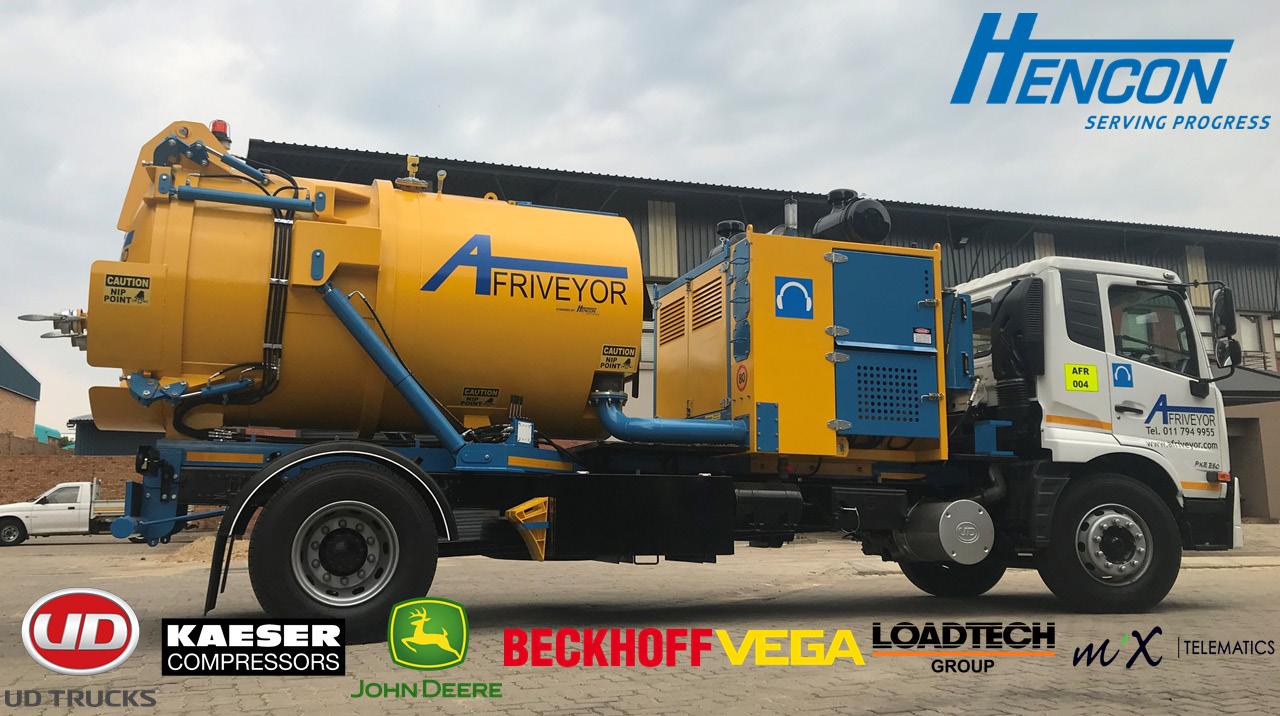

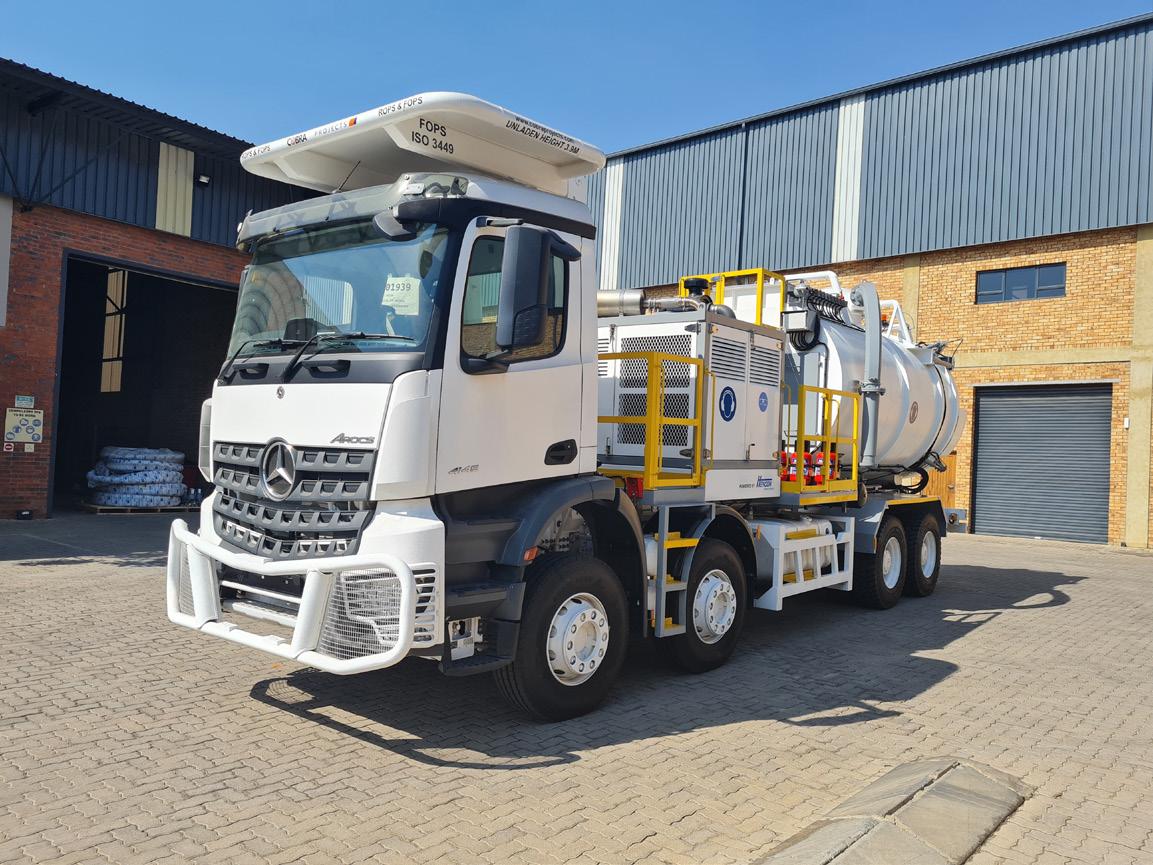
At Hencon we assess the customer requirements and then tailor-make a fit-for-purpose solution. Typically, we establish the quantity, diameter size, SG and distance that the customer requires his material collected to.
The material is collected via hose or fixed pipe reticulation to the collector. The filter house can be incorporated into the collector to discharge all material or be a separate unit. A lot of emphasis is placed on the filter to ensure the correct size and material is chosen. The filters are cleaned with a manual shaker motor or preferably with pneumatic reverse-pulse filtration.
The collected material can be gravity discharged into a skip, stockpile or ore pass or continuously fed onto a conveyor belt or into production using double-flap valves.
The vacuum unit is balanced to the requirements, and we manufacture from 15 – 220kW in electric or diesel-driven versions. The reliable and low maintenance roots blower is a positive displacement pump that is often complimented with additional intercooler technology to create deep vacuum and high airflow. No water is used.
Vacuumation can be effectively used to recover valuable material and handled once, fed back into production.
For urban planners, accommodating makers—from smallscale specialty food producers to startup tech entrepreneurs—is increasingly important.


How can a city be socially just, environmentally sustainable and economically robust? And what role can urban industry play?
These questions underpin IBA27 (www.iba27.de), an ambitious international building exhibition to be held in the Stuttgart region of Germany in 2027. Ahead of that final showcase stage, designers from all over the world are taking part in multiple planning and architectural projects.
In March 2021, the Frankfurt-based architectural practice JOTT ( www.jott-urban. spaces) took first place in one of these projects, a competition to design a new neighbourhood in the town of Winnenden, south Germany. Participants were tasked with drawing up plans for what the organisers termed a “productive urban quarter” (bit.ly/3IDkEiW).
When completed, visitors to JOTT’s new district will find no cars. Instead there will be an array of work spaces—industrial warehouses, a craftsman’s yard and workshops, offices, shared working spaces, laboratories and studios—built into seven mixed-use, high-density blocks with inner courtyards. Around these will be woven public squares, meadows and playgrounds. The plans also include a childcare facility, retail and leisure uses, flats on upper floors and
space for urban agriculture on the roofs of buildings. The whole idea is that people who make things for a living should be able to live and thrive there.
The European Union’s key policy document for sustainable urban development, the New Leipzig Charter (bit.ly/3JGl616), advocates precisely for this kind of city: the productive city. It aims to enable and promote new forms of mixed-use development (bit.ly/3qzlg2Q) that go beyond, say, adding a retail shop at the foot of a block of flats.
Research (citiesofmaking.com) suggests manufacturing plays an important role in helping urban economies thrive. For urban planners, accommodating makers (bit.ly/3Ld5YZl)—from small-scale specialty food producers to startup tech entrepreneurs— is increasingly important.

Why the city of the future needs to be productive
Manufacturing in an urban context has been shown to provide comparatively secure and well-paid jobs (bit.ly/3qzlnvi). It is important in achieving net-zero carbon targets (bit.ly/3uuTe9R) and transitioning to urban circular economies (bit.ly/3L8MRiY). It reduces delivery kilometres, promotes the use of more sustainable delivery vehicles such as cargo bikes, and encourages local repair and reuse centres to be developed. And, research shows (bit.ly/3JH2qy6), it makes urban spaces more interesting (bit.ly/3wCja5R). Because most city dwellers no longer produce things for a living, many seem to relish the opportunity to see how others do it.
While most cities have been mixed use throughout their history, things changed at the beginning of the 20th century. Modernist urban planning sought to make cities more efficient, rational and hygienic. Concepts including functional segregation and single-use zoning became standard planning doctrines (bit.ly/3tEfyyu). As a result, most manufacturers were relocated to industrial parks on the outskirts of cities (bit.ly/3tCgFi4).
rise. However, the sector’s overall contribution to the city’s gross value added ( bit.ly/3NhliGe) and total employment (bit.ly/36qehlK) is still far from recovering from its decline of recent decades.
Companies have been quick to latch on. Guinness, for example, recently announced plans to open a brewery in central London near Covent Garden (bit.ly/3Lf6ypv), bringing brewing back to an area where beer was first made 300 years ago.

New developments in cities across the globe—from Rotterdam’s mixed-use Makers District (www.rotterdammakersdistrict.com) to the Makerhoods in Newark, United States (www.makerhoods.com)—echo this trend. It is fuelled by several factors. New production methods (bit.ly/3qzlze0) such as 3D printing have made production less polluting and disruptive. Much manufacturing has also moved away from large-scale production, heavy machinery and massive infrastructure toward smaller, bespoke companies. This makes it easier to reintegrate industry into the urban fabric.
Further, a new generation of urban makers (bit.ly/3qzqKuv), buoyed by the potential of online platforms such as Etsy to sell their wares, has revamped the image of the sector. Consumers, meanwhile, increasingly want local craftsmanship and sustainable, customised products (bit.ly/3JHDVAV).
If 1960s urbanists came to value diversity in cities as an asset ( bit.ly/3qCuKdI), industry nonetheless continued, quite literally, to be sidelined (bit.ly/3IIOEtA). Manufacturing was perceived as dirty, dark and dangerous, incompatible with other uses and outdated.
Urban economies shifted away from the production of physical products and toward intangible sources of wealth generation: knowledge industries, culture and services. In New York (bit.ly/3DaS9YG), blue-collar work and workers began to be portrayed as relics of a bygone era. As a result, manufacturing jobs plummeted from over one million in the 1950s to less than 200 000 in the 2010s (bit.ly/3Lh0RXY).
The idea of the productive city may currently be popular, but reversing these longstanding processes of industrial decline is not easy. In recent years, the city of Brussels has made a name for itself as a local production hub (citiesofmaking.com/cities/brussels ). And yet, industrial production and employment is still falling (bit.ly/3tEBZ6T).
In London, the situation is similar. Urban manufacturing is increasingly talked about and small-scale and artisanal production are on the
To counter this trend, the revised London Plan (bit.ly/381L7dh)—the city’s spatial development strategy—advocates intensifying and densifying existing industrial sites to create additional capacity, as well as mixing them better. While it lacks a citywide strategy (bit.ly/3qzrj7B) to re-industrialise urban spaces (bit.ly/3D7AjWx), it does suggest stacking uses: allowing flats, say, to be built above industrial space, or making rooftops usable for leisure, commerce and green infrastructure.
The United Kingdom’s first open-access factory has just opened in northeast London’s Lea Valley, with support from Enfield council. This social enterprise, Bloqs (buildingbloqs.com), provides 32 000 square feet of workspace and £1.3 million worth of equipment for a wide range of crafts in a converted warehouse. It is part of a multibillion-pound urban regeneration project bringing 10 000 homes and 6 000 jobs to the area.
As with Winnenden’s new neighbourhood, the hope in Enfield is to showcase how urban manufacturing can help a city thrive. But where JOTT’s intervention will be permanent, Bloqs is classified as “meanwhile use” (bit.ly/3wGcPGG). There is no guarantee the factory will remain a permanent fixture after its current 12-year lease expires. Research suggests it should—it is precisely the kind of productive space our cities need.
Johannes Novy Senior Lecturer: Urban Planning School of Architecture and Cities University of WestminsterBecause most city dwellers no longer produce things for a living, many seem to relish the opportunity to see how others do it.
Africa’s smallholder farmers must use both traditional and new practices
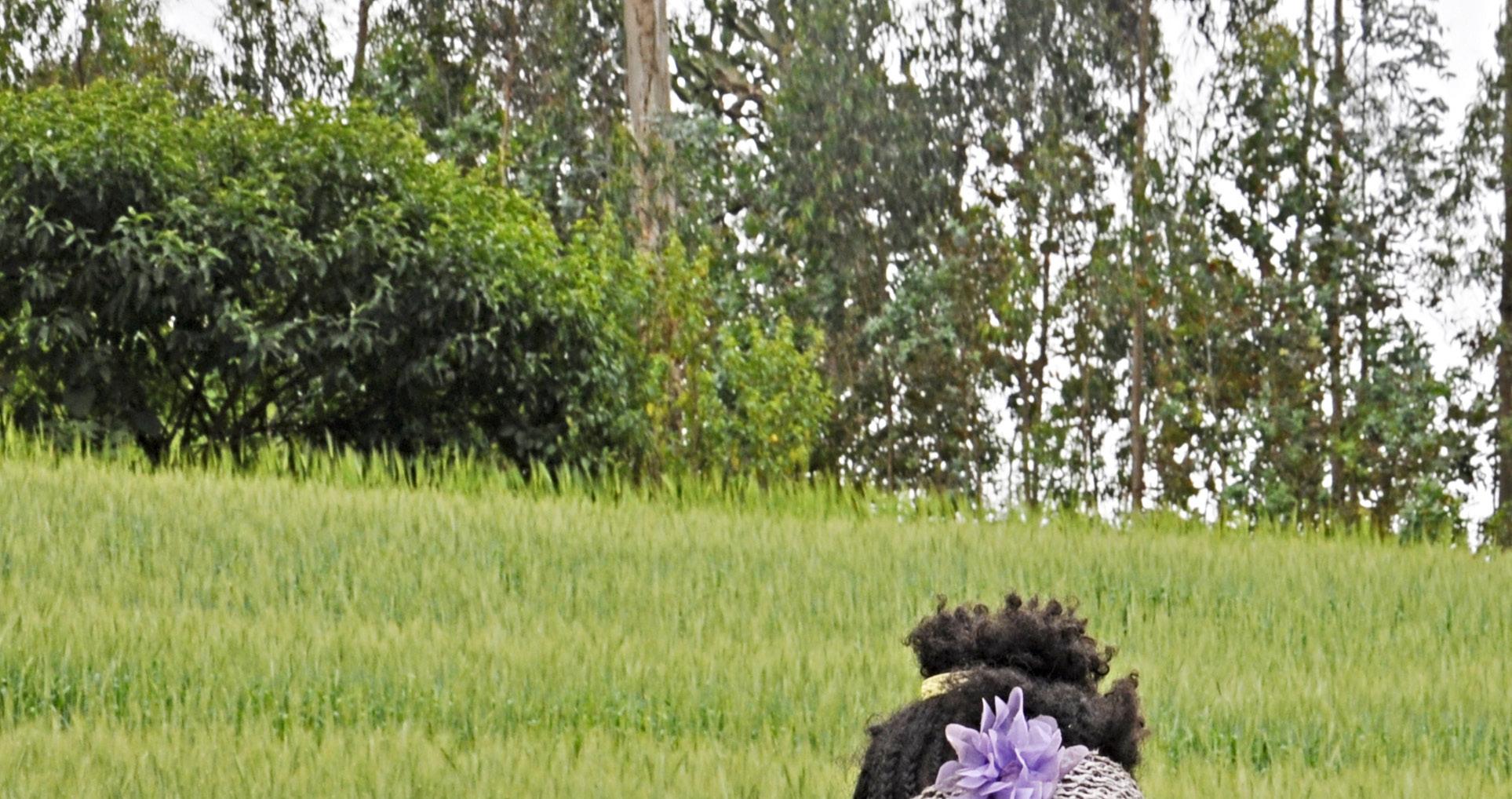
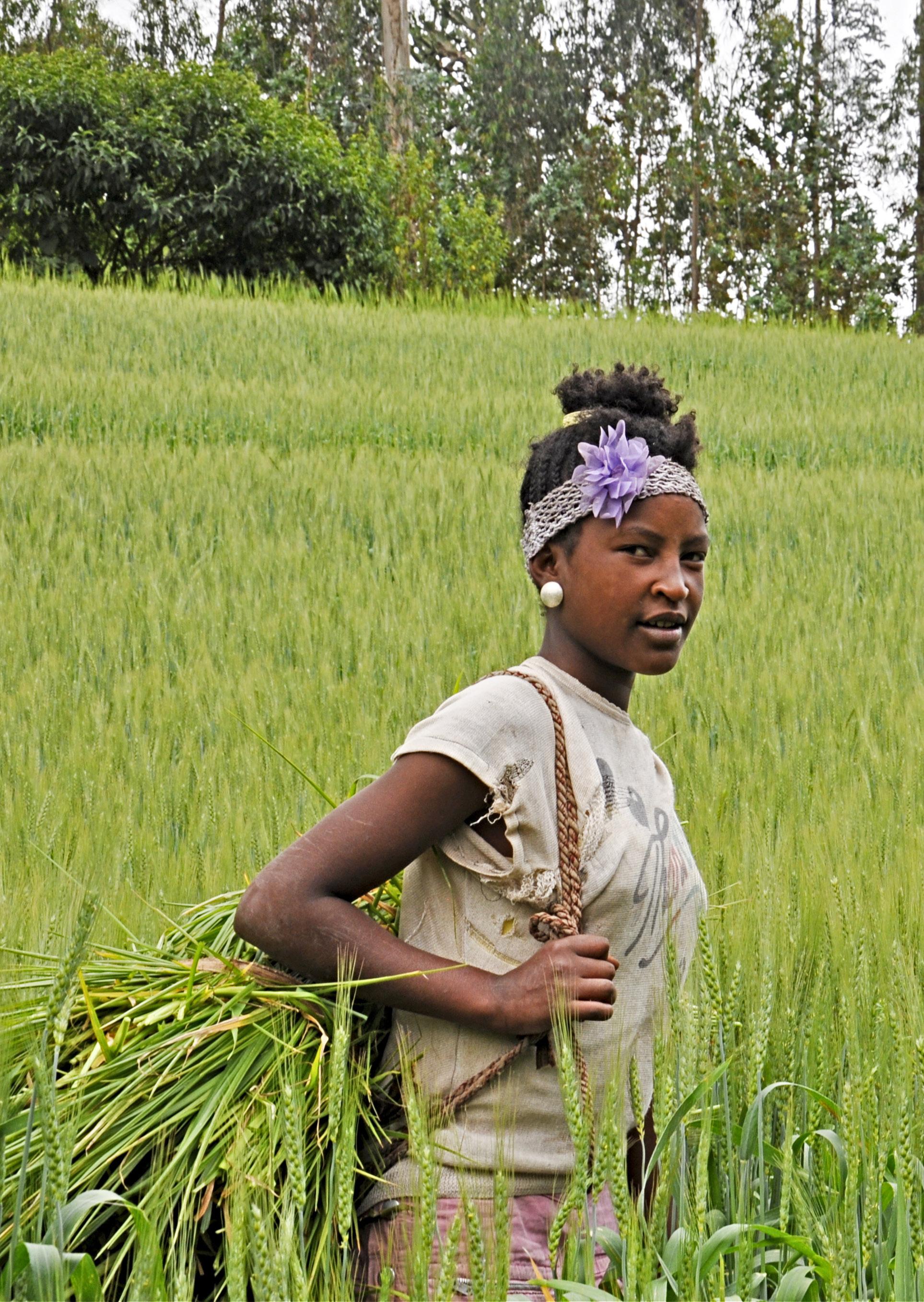
As an agricultural and environmental scientist, I have worked for decades exploring the practical challenges that smallholder farmers encounter in East Africa (bit.ly/36irKMI). These include controlling weeds that can choke their crops and looking for new ways to deal with pests or diseases that threaten their harvests.
I focus on smallholder agriculture because most of the food in the region is generated by farms (bit.ly/3ulAedW) that are only a few acres or hectares in size. And, while African economies are diversifying, most Africans (bit.ly/3twyRtv) still depend on crops and livestock production for income.
Across the region there is a strong link (bit.ly/36I4hUI) between fighting hunger, poverty and improving productivity and incomes on smallholder farms. But we must be careful to avoid pursuing solutions that damage the broader ecosystem.
In my research, I have explored how farmer innovations and local knowledge (bit.ly/3qtvzFl) can contribute to maintaining crop varieties, livestock, pollinators, soil microorganisms and other variables essential for a sustainable agriculture system—what scientists call agriculture biodiversity or agrobiodiversity.
My work puts me firmly on the side of people who today advocate for an approach to food production that is called agro-ecology (www.fao.org/agroecology/home/en) or environmental conservation. This means a focus on farming methods that protect natural resources and vulnerable ecosystems while respecting local knowledge and customs.
At the same time, however, in certain contexts I do support approaches that are viewed as ‘wrong’ to many contemporary advocates of agro-ecology (bit.ly/3Iznvcn). These include the use of certified, commercial seeds for improved crop varieties, fertilisers and genetically modified crops.
Opposition by agro-ecologists is rooted in a mix of concerns. With certified seeds, there is wariness about the cost to farmers and the impact on the common practice of saving seeds from one season to the next. For fertilisers, the focus is on run-off caused by their excessive use in places like North America and Europe.

Climate smart farm in western Kenya
Opposition to genetically modified crops involves unease with using genes from unrelated species to improve crops. In addition to this is the potentially higher price of modified varieties.
While this may seem contradictory to some, I know that agro-ecology and advanced farming practices can co-exist in Africa. Indeed, to ensure African farmers and food markets can thrive while protecting local ecosystems—especially as climate change presents a host of new food-related challenges—they must co-exist.

In my view, supporters of agro-ecology who strongly oppose new inventions are sincere in their beliefs that they are advocating for the interests of Africa’s farmers and the preservation of vulnerable ecosystems. Unfortunately, if successful, such hardline positions will narrow the options available in ways that will be harmful to both.
The three issues that appear to be most contentious for certain advocates of agroecology are: fertilisers, commercially produce improved seeds, and genetically modified crops.
Let us start with synthetic fertilisers. The main concerns with fertilisers are related to their misguided and excessive application. In some places, this has contributed to the degradation of freshwater and saltwater ecosystems (bit.ly/3NtHWeP). However, rather than an absolute ban on using them, I prefer strategies that consider their safe, and modest, use.
There are many situations on African farms today where modest amounts of synthetic fertilisers—applied in combination with other sustainable soil management strategies such as crop rotation and intercropping (bit.ly/36nvlcc)—will do more to restore degraded landscapes than cow or sheep manure alone.
For the farmers with whom I have worked, the manure from their livestock may be enough to fertilise the small garden outside their kitchen, but it will not be nearly enough to fertilise entire farms—particularly if they hope to grow enough food to sell.
Some agro-ecology advocates also firmly oppose commercial seeds in favour of those saved by farmers from season to season. There are concerns about the cost of new seeds to farmers and also that crop diversity will narrow as varieties, which farmers have planted for generations, will be lost.
Again, I look for evidence of outcomes, as do most farmers I encounter. Overall, the farmers with whom I have worked in Africa are radically practical and carefully evaluate their options. They will purchase a commercial seed if they see clear evidence it is worth the investment. For instance, that it provides superior yields, or other qualities, while retaining the flavour and texture they and their customers prefer. If not, they will use seeds saved from previous years.
Expanding their options with commercial seeds can empower farmers. It helps them make choices that can help improve both household income and sustainably boost production to meet consumer demands. These outcomes align with agro-ecological principles.
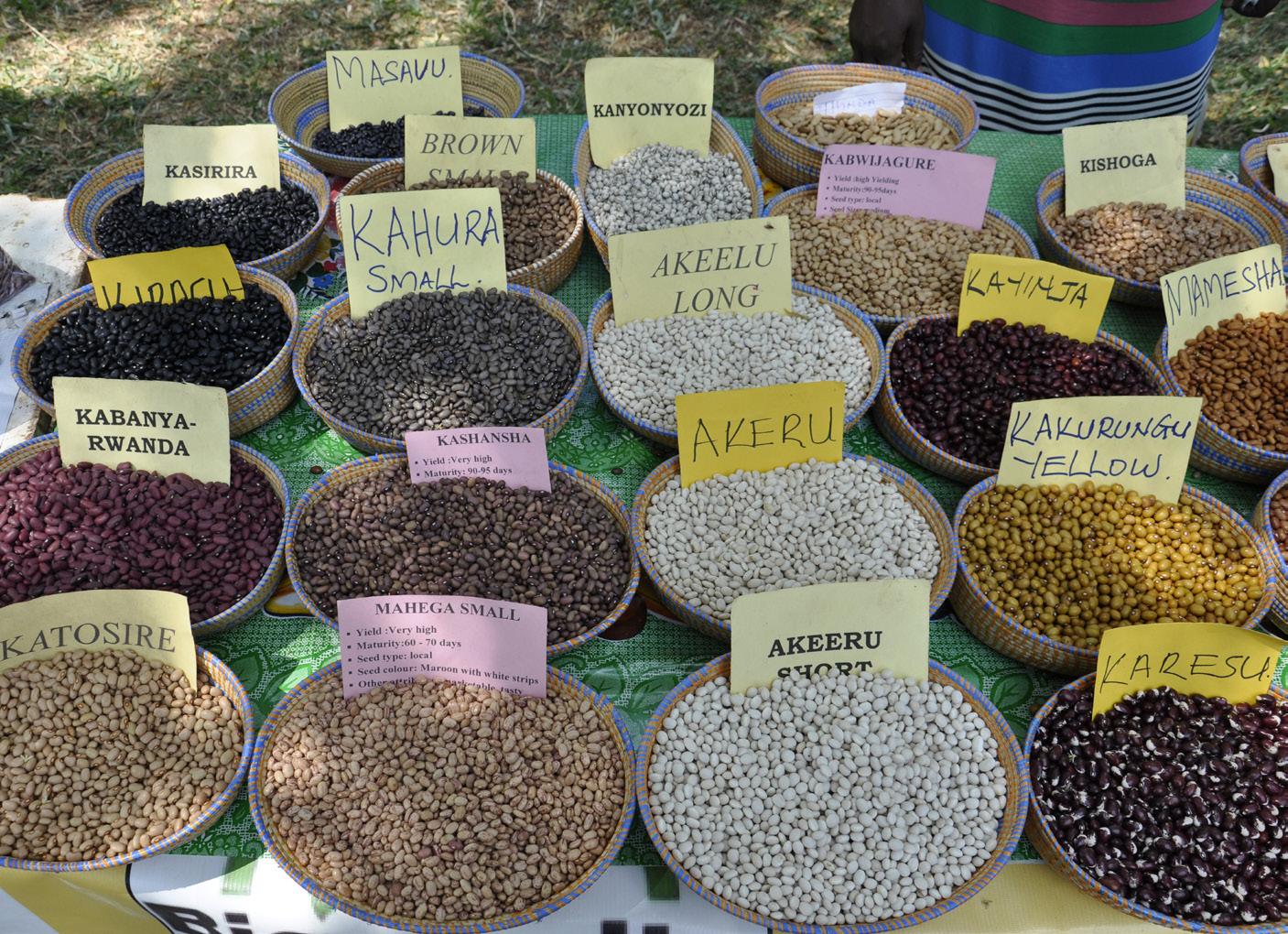
When it comes to genetically modified crops, I focus on the traits they contain and the agroecological conditions where they are to be used. Again, context is critical. There are clearly contexts where genetically modified seeds —once thoroughly tested to prove they are safe—can be compatible with agro-ecology.
For example, varieties of maize (bit.ly/3DlVVyF), cotton (bit.ly/3Iz9z2b) and cowpea (bit.ly/3L8wenJ) are now being developed for, and increasingly cultivated by, African farmers. The genetically modified traits are used to help address pests and other stresses, including drought. These crops undergo extensive trials and national regulatory reviews (bit.ly/3Dbtwv4) to assess their safety and consider their release to farmers for use.
New varieties of genetically modified maize and cowpea that can fight off destructive crop pests are especially attractive. They contain traits acquired from a safe, naturally occurring soil bacteria called Bacillus thuringiensis, or Bt. It has also been used for decades (bit.ly/3ixjYB6) as an organic crop protection spray. Incorporating Bt traits directly into the crop itself reduces the need to treat fields with expensive and, in some instances, potentially toxic pesticides that may result in huge problems for people and the environment from inappropriate use. In this context, the genetically modified seeds, if affordable, could be the optimal choice from an agro-ecological perspective.
Bt cowpea was recently approved in Nigeria (bit.ly/3qw7GwY) and Bt maize is being evaluated as an option for fighting destruction caused by the recent arrival of fall armyworm pests on the continent (bit.ly/3JEpRZ4). Bt cotton is already grown in several countries in Africa where it offers higher yields and reduces the need for pesticides.
However, farmers in Burkina Faso are no longer growing Bt cotton (bit.ly/36sQvpf) due to concerns about the quality of the fibres produced by the variety available to them, though not its pest-fighting properties. These quality concerns point to the need to support local breeding efforts, as Nigeria is now doing with its Bt cotton varieties, as opposed to rejecting the technology itself.
The difficult issues around Bt cotton production in Burkina Faso are evidence that there are no perfect solutions.
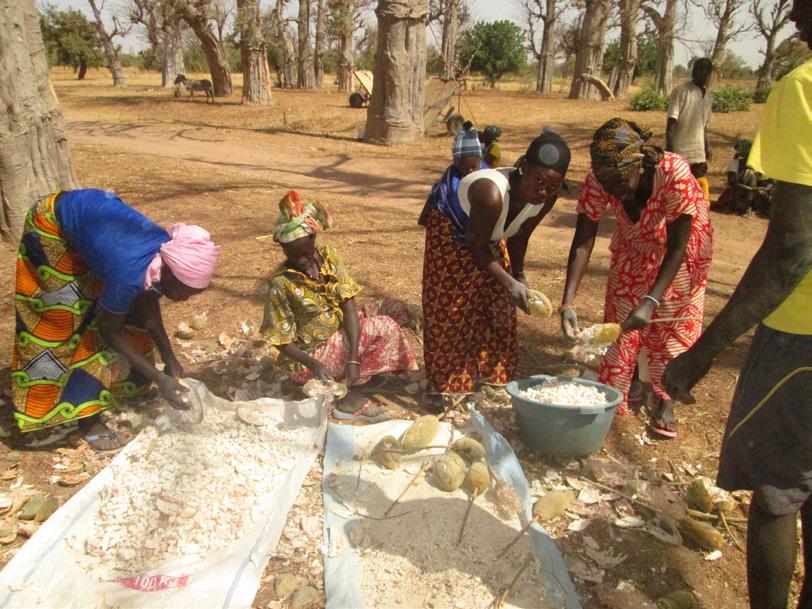
But we know the results of a lack of choices: where African farmers plant only the seeds from varieties they have been cultivating
for decades and have limited options for maintain soil health and dealing with crop pests. It has contributed to a situation where crop yields have stagnated, lands are degraded of basic nutrients, consumers’ demands must be met with costly food imports. Those who depend on agriculture suffer high rates of poverty and hunger.
We also know from the experience of farmers in other countries about the pitfalls of an over-reliance on a small range of commercially produced crop varieties and unchecked use of fertilisers and pesticides.
But we will not overcome these challenges by narrowing the options for addressing them. Instead, we should be open to a wider range of practices and innovations.
For me, that means embracing the core focus of agro-ecology—supporting environmentally sustainable food production that benefits local farmers, consumers and ecosystems—while avoiding the wholesale rejection of certain technologies which, in the right context, can be instrumental to achieving this critical goal.
Michieka Professor: Agriculture (Weed Science) and Environmental Sciences University of Nairobi
Ratemo
Agro-ecology supports environmentally sustainable food production that benefits local farmers, consumers and ecosystemsResilient seeds in East Africa


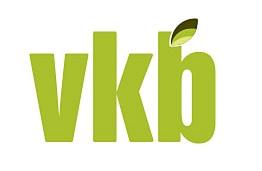





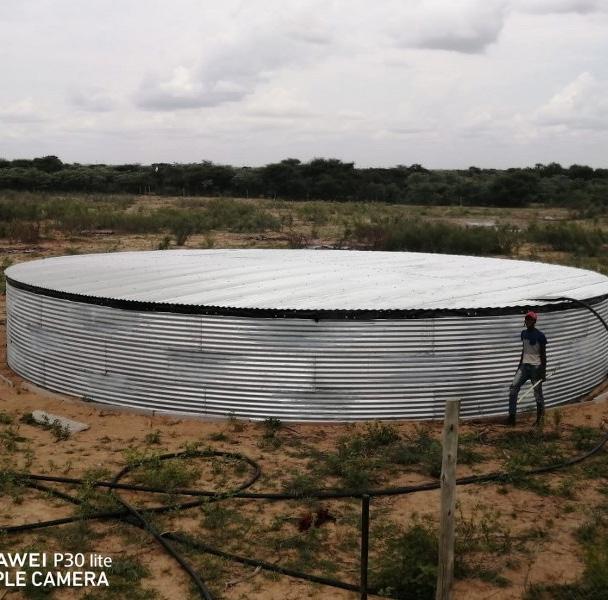

South Africa is failing to ride the digital revolution wave —what it needs to do
Firms in the manufacturing, engineering and related services sector are more ready than others.


orkplaces are adopting new forms of advanced automation at a rate that suggests a digital revolution in the making.
Digital technologies such as sensorisation, networked data analytics and artificial intelligence make it possible to collect data along the entire chain of production and consumption activities. They also enable the data to be used for a host of other purposes. These include shaping markets and industries, offering benefits like reducing production costs and time to market, and increasing product and service quality.
But it is a revolution that is playing out unevenly, across and within countries. This has consequences for the competitiveness, inclusiveness and sustainability of economies.
Countries have varying capacities to optimally harness and integrate these digitalised technologies. Preconditions for uptake include, firstly, reliable enabling infrastructures. This includes connectivity and energy. Secondly, there need to be foundational capabilities, such as digital skills.
WMiddle-income countries such as South Africa are finding these conditions tough to meet. This is because they have been affected by premature de-industrialisation: a lack of diversification and relative shrinking of their production structure.
Our research (bit.ly/3DaqGX2) shows that South Africa’s adoption and diffusion of digital technologies has been slow and uneven. The research, and an ongoing digital survey, sheds light on the patterns of adoption and the factors influencing them.
We surveyed 516 firms in three key sectors. These were manufacturing, engineering and related services, the chemicals industry and the fibre processing and manufacturing sector.
South Africa has structural constraints that have limited the development and diffusion of skills and capabilities beyond some scattered islands of innovation. The constraints include limited productive diversification, its energy system and a high rate of unemployment.
But the country has potential for more rapid progress. First, it needs to take some crucial steps. It needs better resourced training institutions and more digital upskilling. It needs a more enabling infrastructure such as highspeed broadband. It also needs a coherent digital industrial policy framework that enables a new industrial ecosystem.
Our research highlights the potential of advanced digital technologies to drive socially inclusive and environmentally sustainable industrial development. We also identified pockets of the South African economy where this is happening.
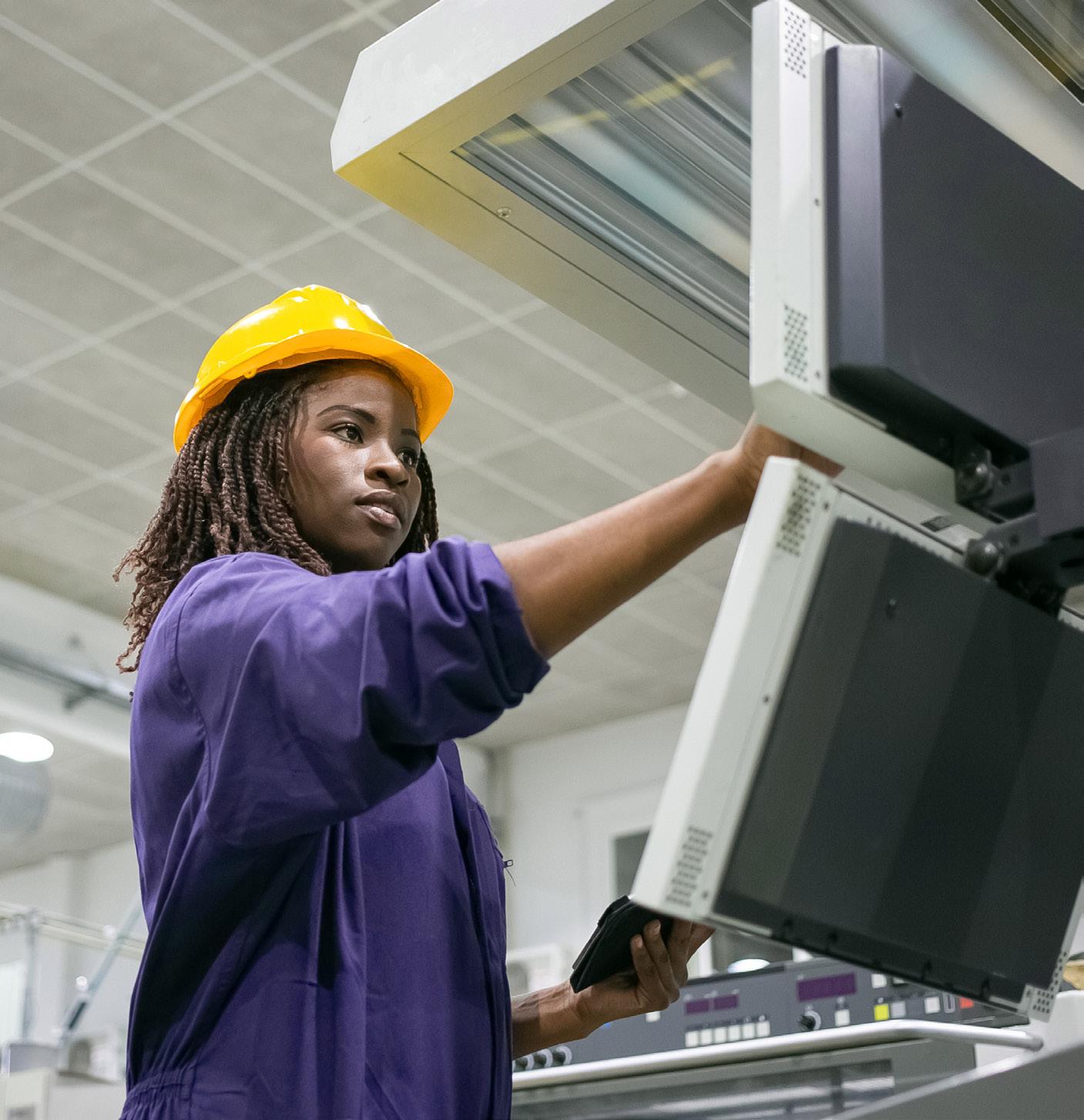
Some mining firms, for example, have made processes more efficient and reduced waste. Predictive maintenance uses data analysis to identify problems before they cause production failures.
In the metal-machinery value chains, some foundries are using AI to predict sub-surface defects and reduce internal scrap and rework rates. This has had a hugely positive impact on three fronts: reduced energy usage, the environment and competitiveness.
In agriculture, some producers are using digital technologies such as blockchain and radio frequency identification tags. These give farms and their ‘cold chains’ a competitive advantage in the export of high-value fresh fruits. This ‘industrialisation of freshness’ is making it possible for intensive agriculture to expand. The result is more and better jobs.
But the effective use of digital technologies requires reliable digital infrastructure. And firms need skills at all levels. These include programming, web and application development, digital design, data management, visualisation and analytics. Analytics need a strong foundation in literacy, numeracy, and information and communication technologies (ICT).
Firms also need the ability to co-ordinate technological change along chains of activities.
To identify what would enable progress in digital industrialisation, we assessed digital readiness and adoption patterns at both sector and firm level. We found a mixed bag.
The effective use of digital technologies requires reliable digital infrastructure








Many of the firms we sampled still use manual and semi-automated technologies. A smaller group are fully automated and ICT-enabled. The full adoption of advanced digital technologies remains very limited.
This was the case in four key business functions: supplier relationships, product development, production management, and customer-client relationships.
The picture was mixed, too, across the three sectors that we sampled. Firms in the manufacturing, engineering and related services sector are more ready than others. They have adopted digital system-enabled technologies in the four business functions. Not so for firms in the fibre processing and manufacturing, and the chemical industries.
The limited adoption of technologies— and the slow and uneven diffusion—suggest the process of change will be challenging. But firms expressed the intention to start using more technologies in their production and other structures. They also intend investing in advanced digital technologies.
A broader digital industrial policy framework would help South Africa accelerate digital industrialisation and get training institutions better resourced and aligned
Our survey suggests it should have six related priorities:
• Improved cost, speed and reliability of ICT infrastructure (bandwidth);
• Digital skills policy;
• Digital technology policy;
• Financing and investment;
• Linkages to development policy; and
• Economic regulation, competition policy and data.
It should aim to shape a new industrial ecosystem that allows participants to seize opportunities. Key to this is enhancing government capacity to implement and enforce industrial policy. And ensuring more effective co-operation with the private sector.
Overall, digital industrialisation will raise potential trade-offs and new conflicts in the economy. These span issues such as
employment and new skills requirements as well as need for industrial restructuring. There is also a concern that digital technologies will increase the existing divide between large and small firms. In turn, this will reinforce existing concentration in the economy. That would be bad for re-industrialisation.
A digital industrial policy must therefore ensure benefits are distributed across different types of firms, their employees and broader society.
This challenge is certainly not unique to South Africa. Other middle-income economies are facing the same difficulties. They also face the need to work out how to incorporate digital disruption within their existing policy instruments.
The research on which this article is based was conducted through the Industrial Development Think Tank at the University of Johannesburg (www.competition.org.za/idtt).
The research was later incorporated into a book, “Structural Transformation in South Africa: The Challenges of Inclusive Industrial Development in a Middle-Income Country” (bit.ly/3NnjBXZ).
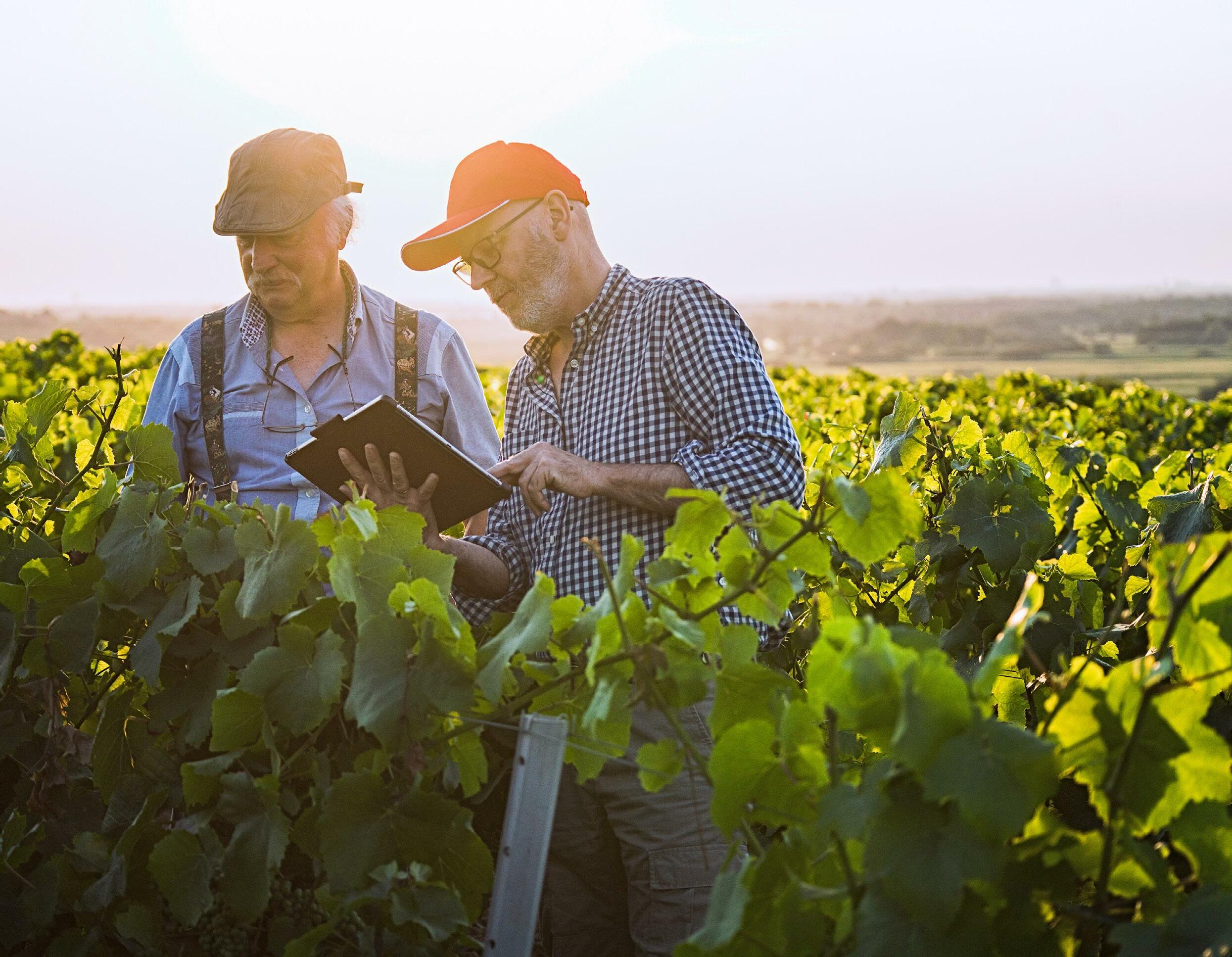 Antonio Andreoni
Visiting Associate Professor SARChI Industrial Development
Elvis Avenyo Senior Researcher Centre for Competition, Regulation and Economic Development
Antonio Andreoni
Visiting Associate Professor SARChI Industrial Development
Elvis Avenyo Senior Researcher Centre for Competition, Regulation and Economic Development


















